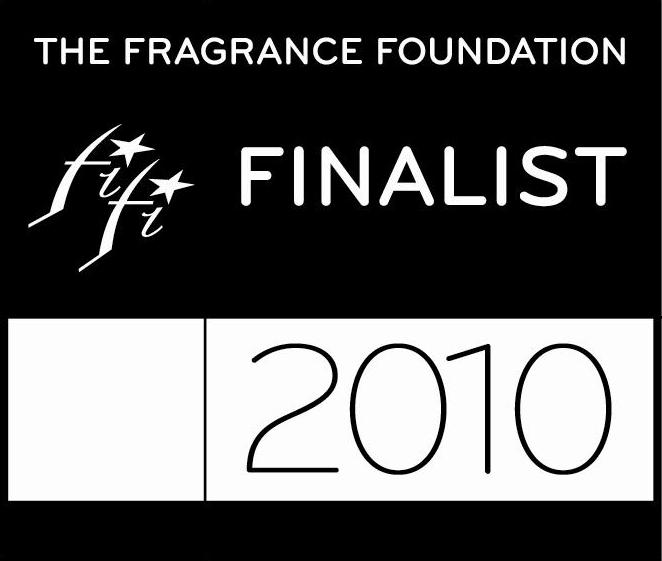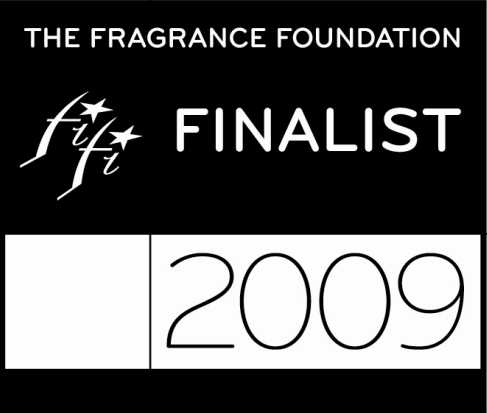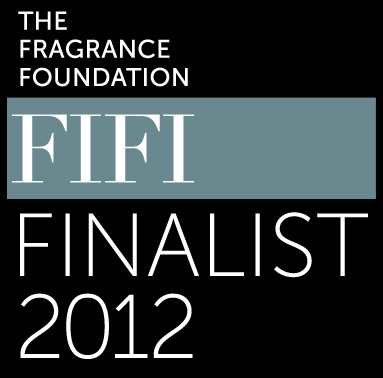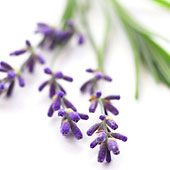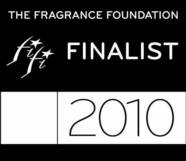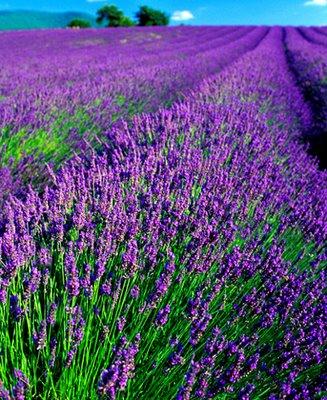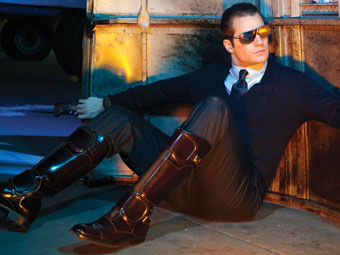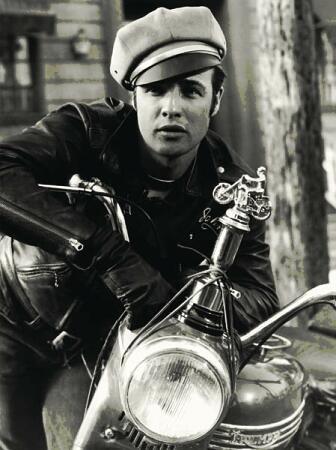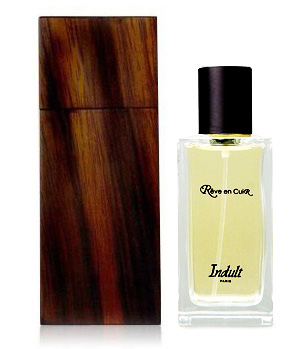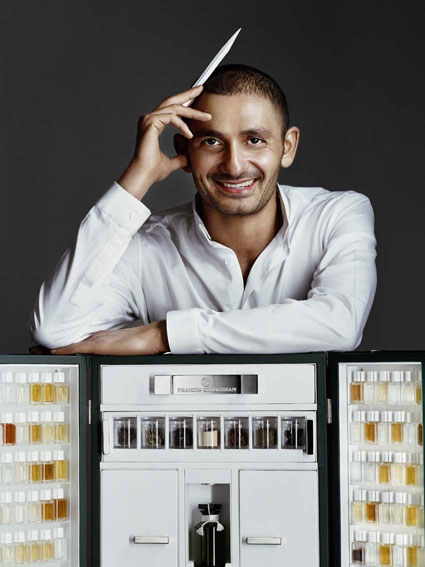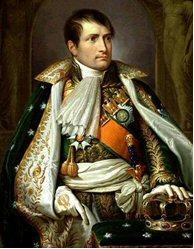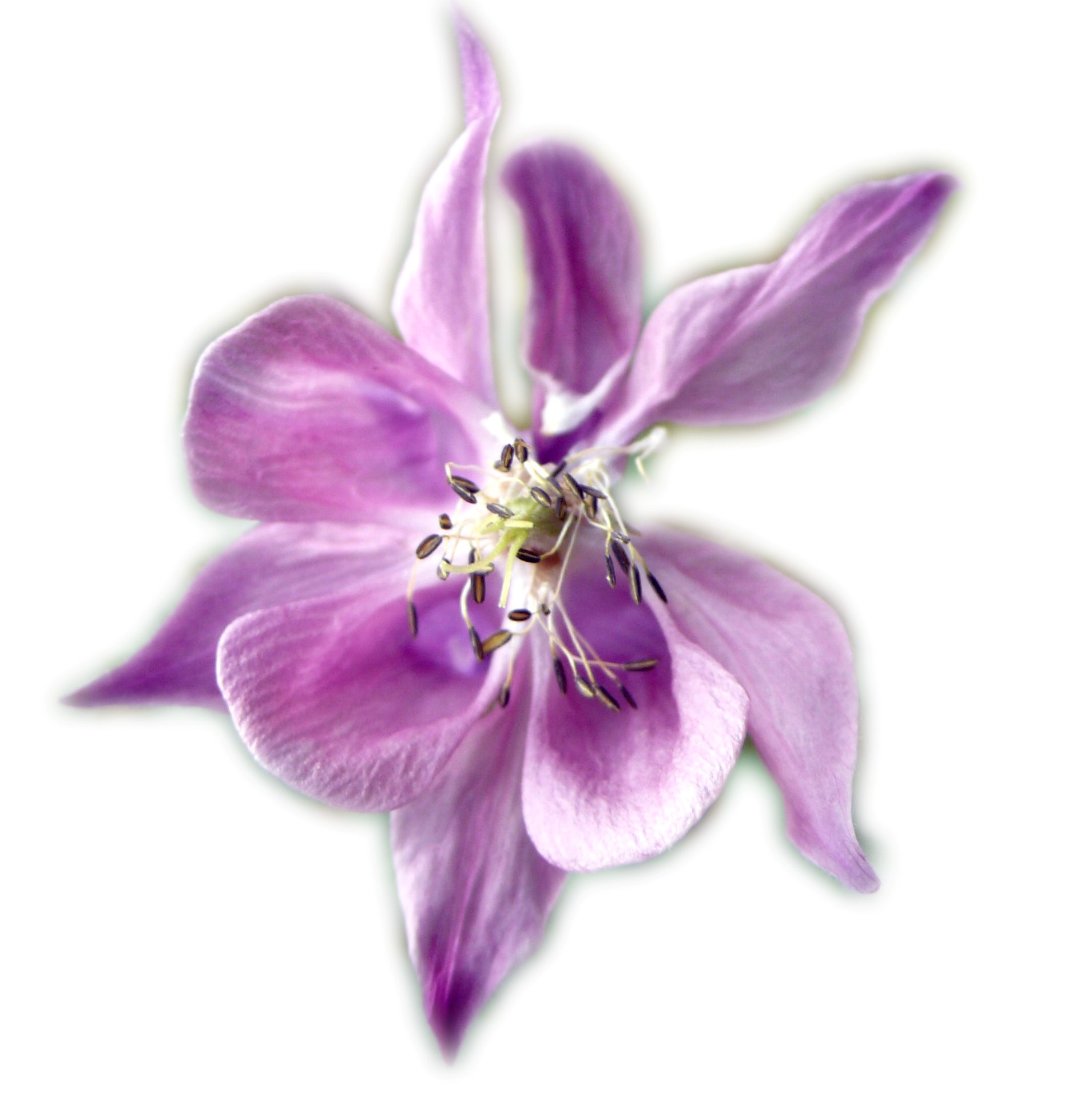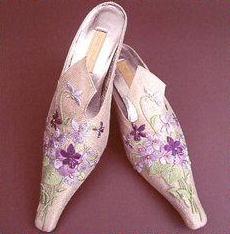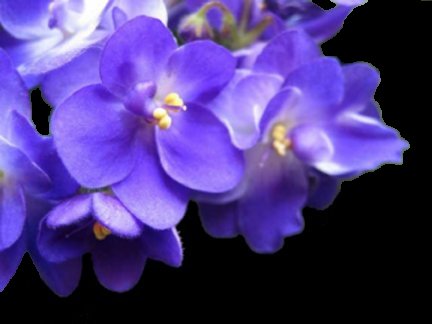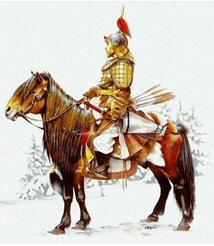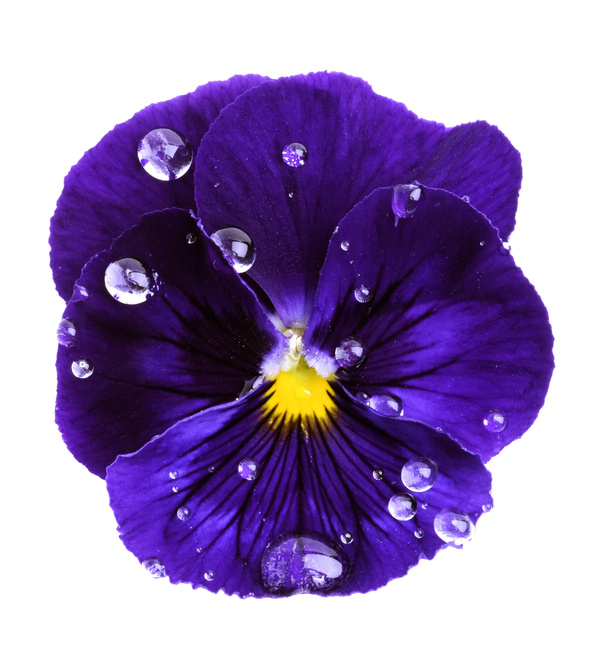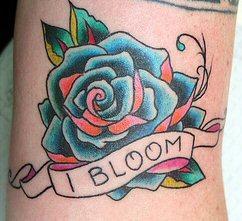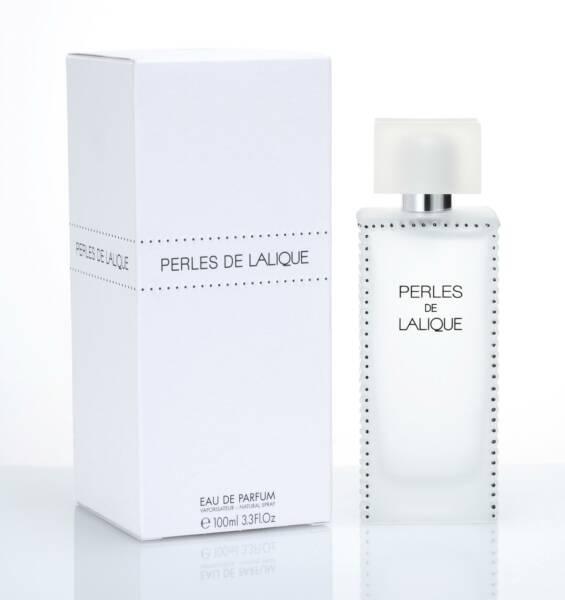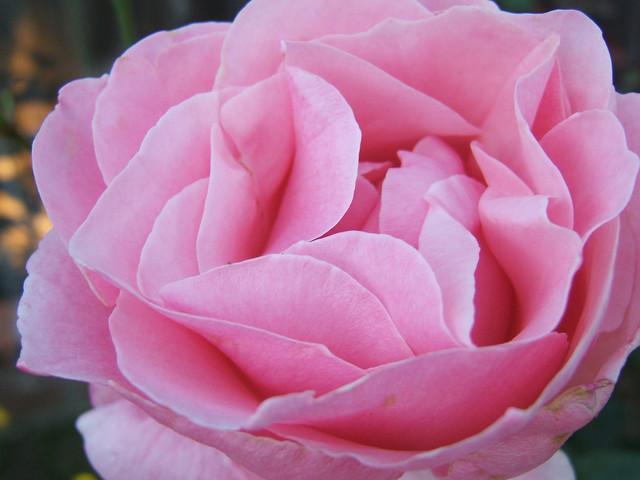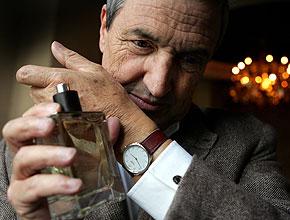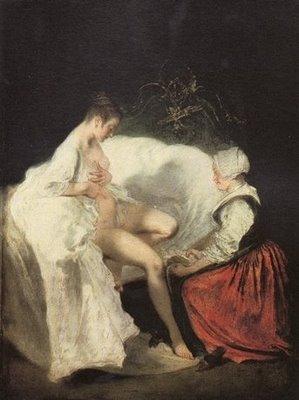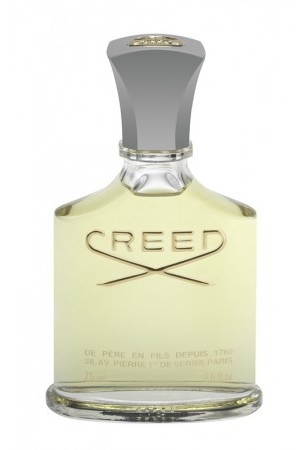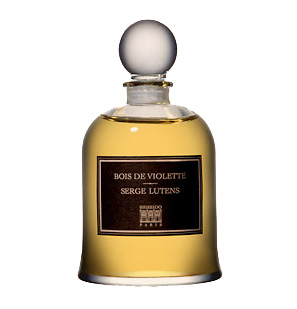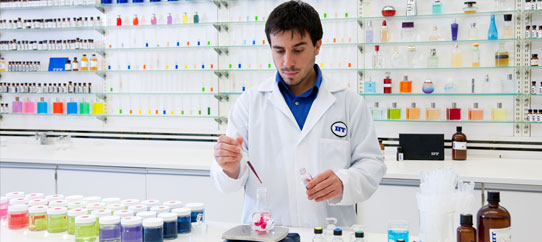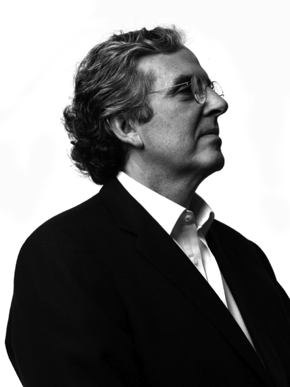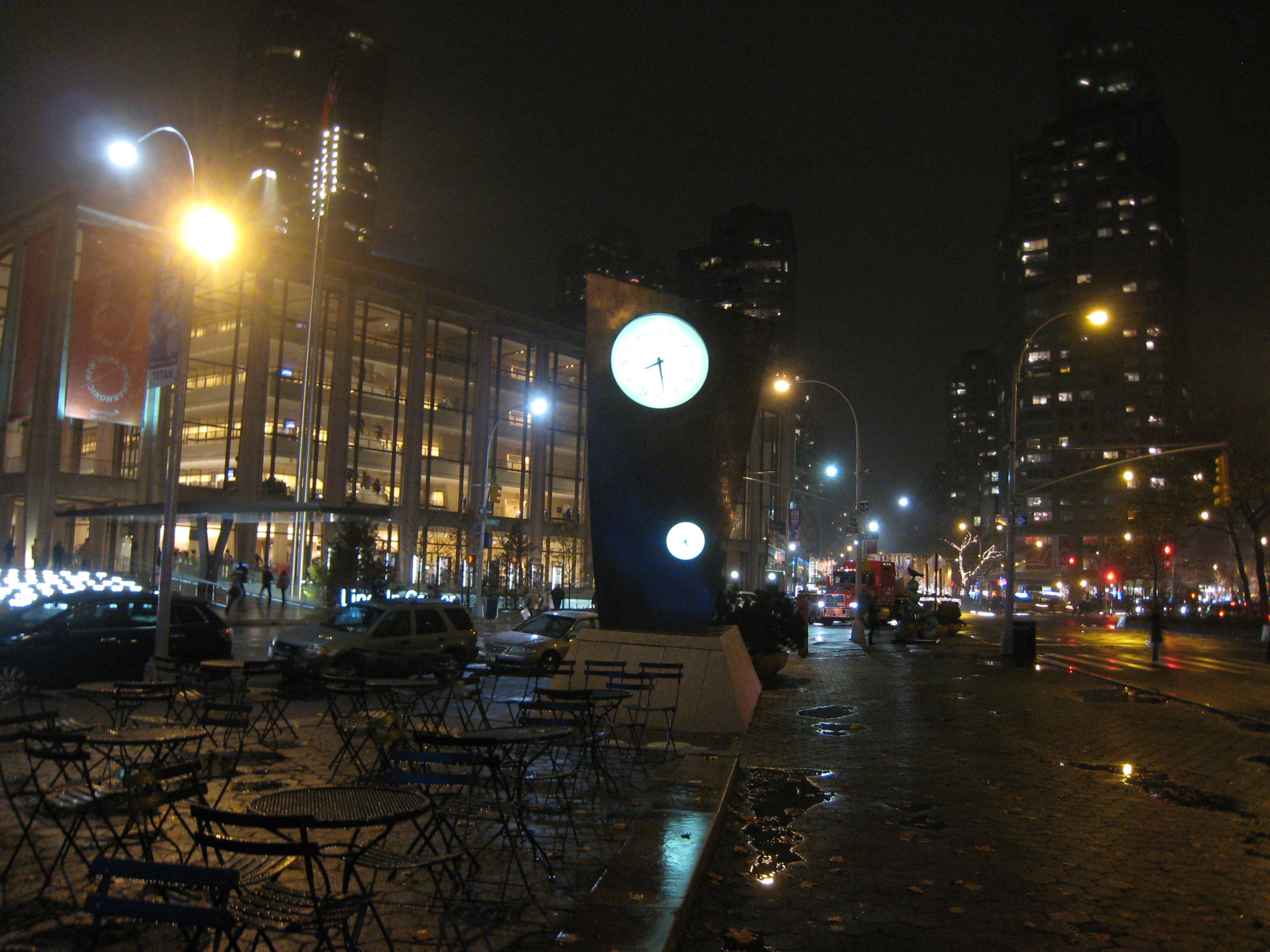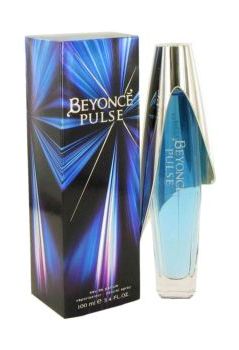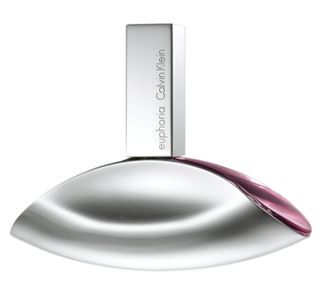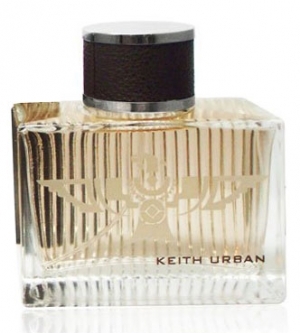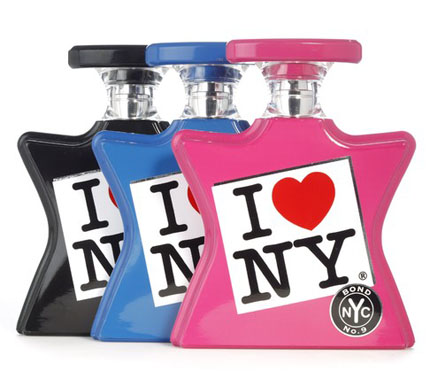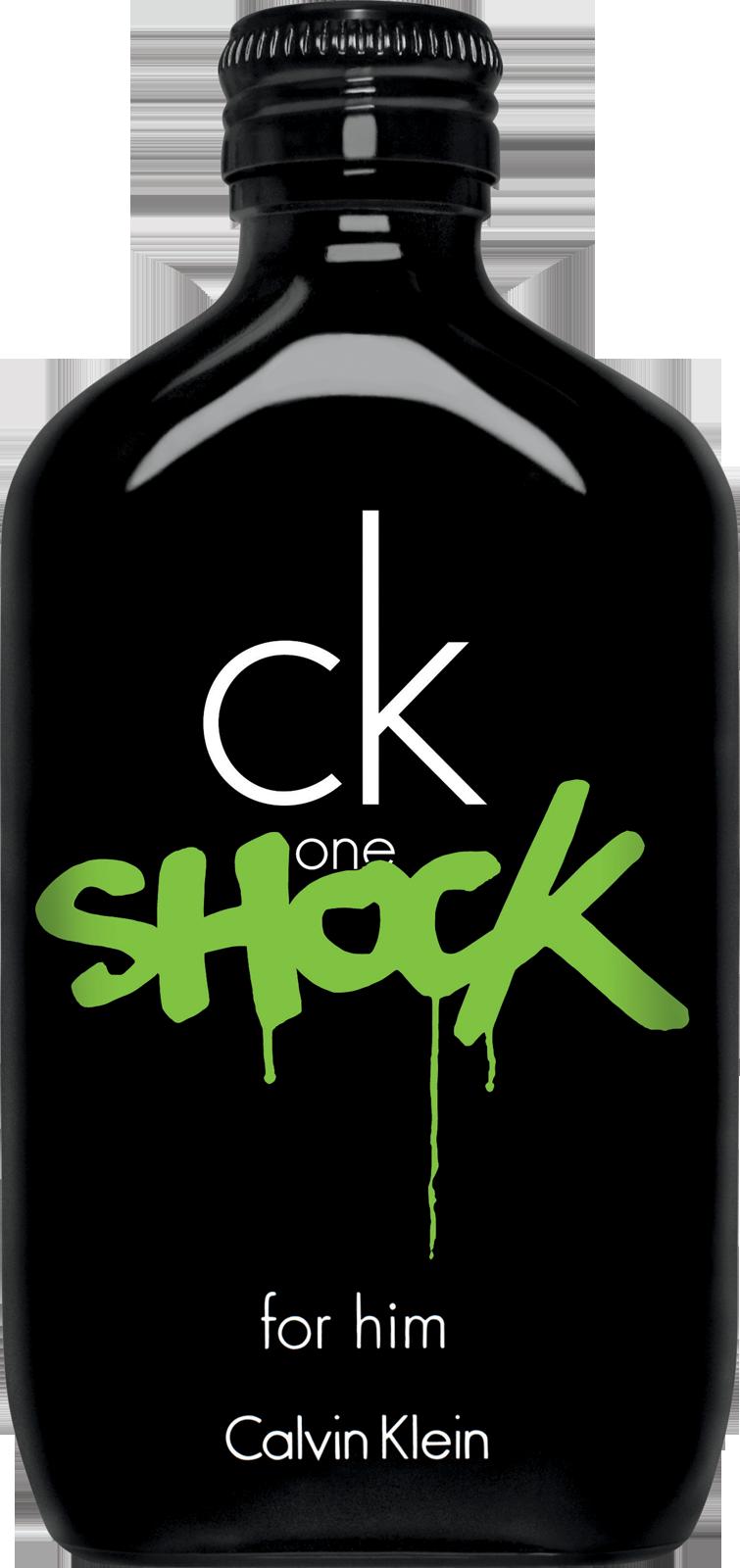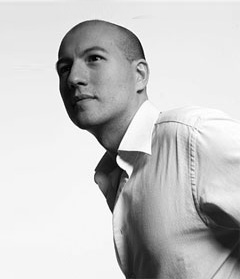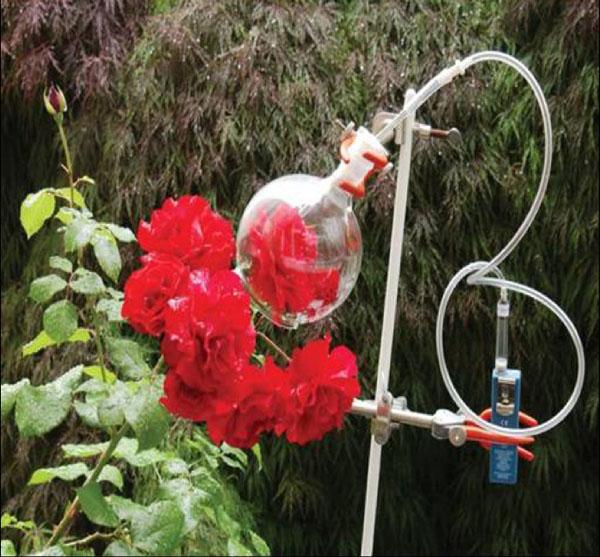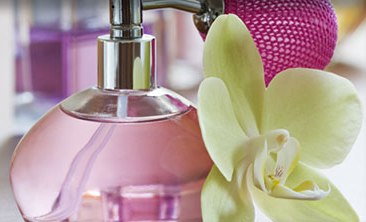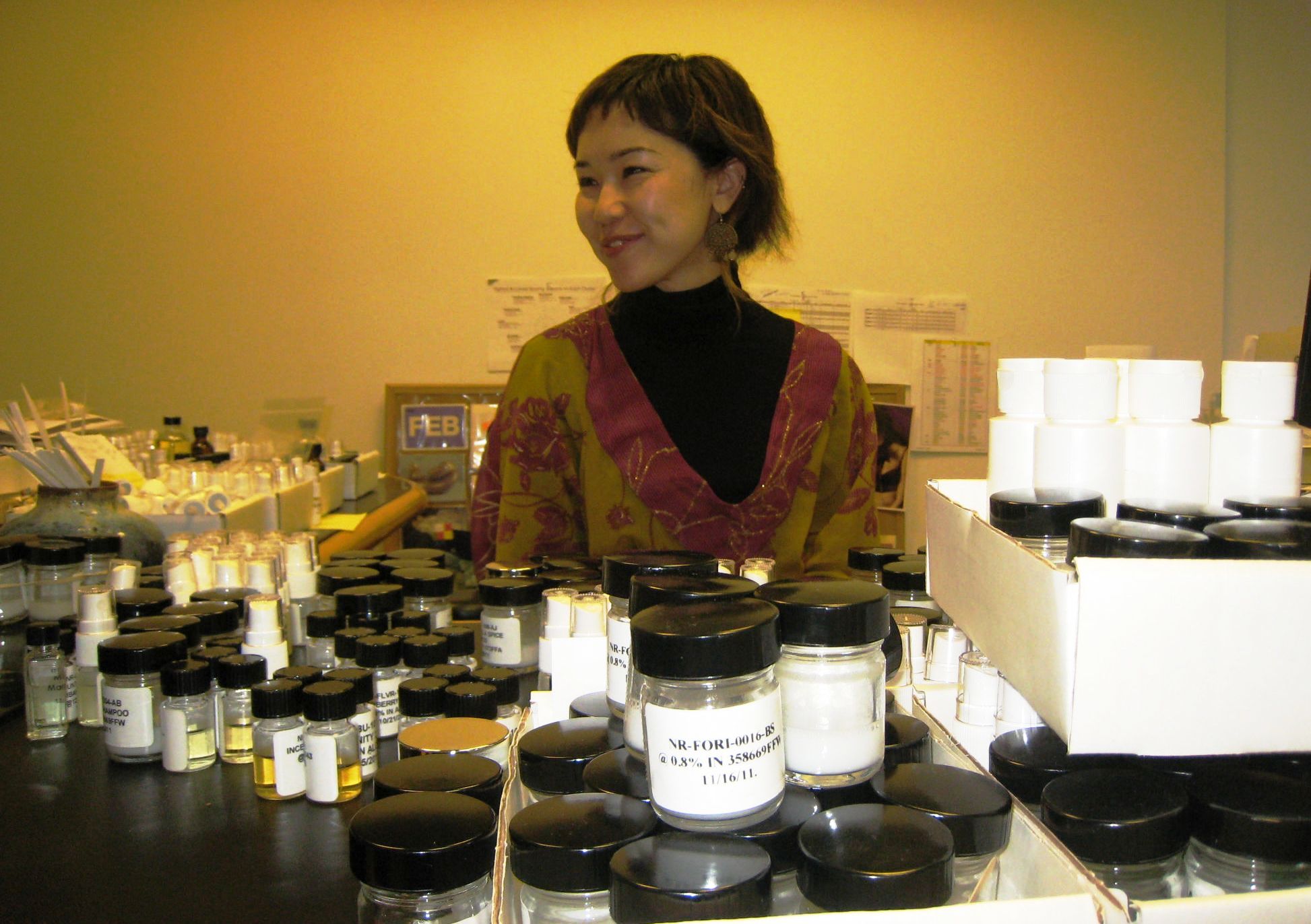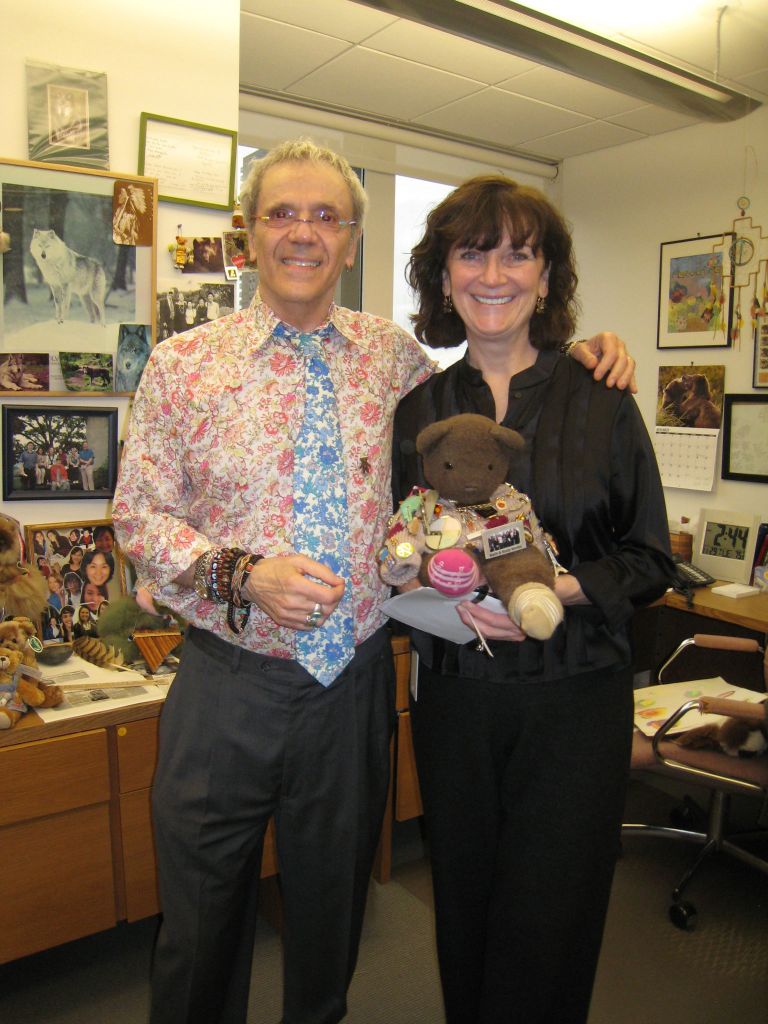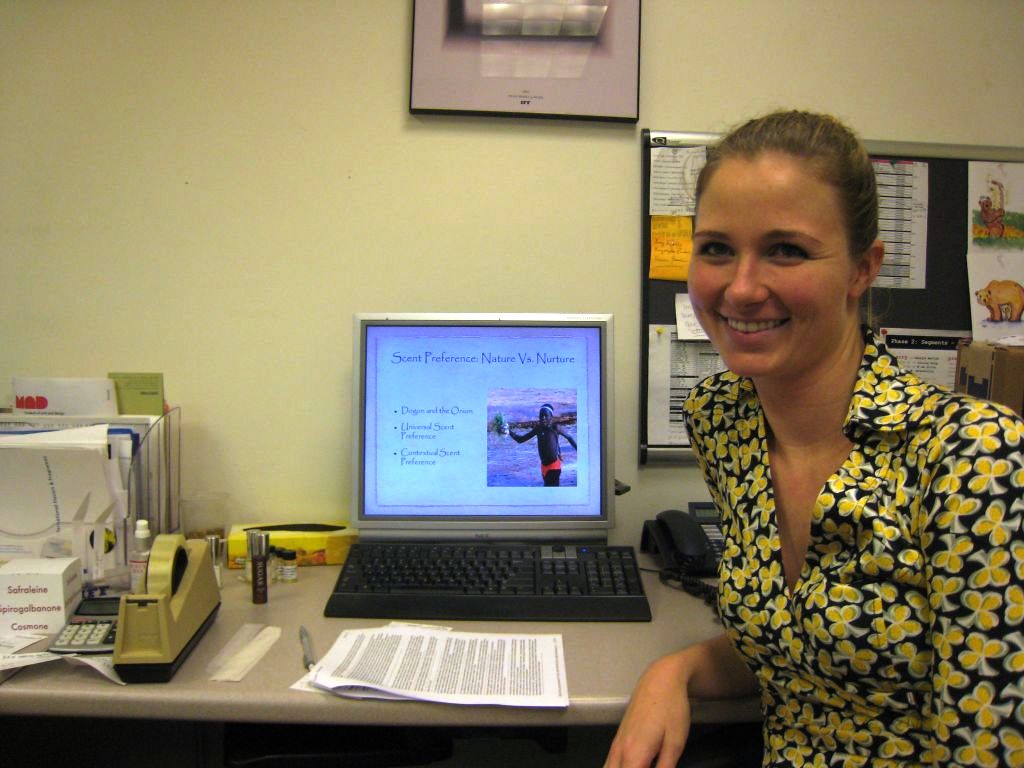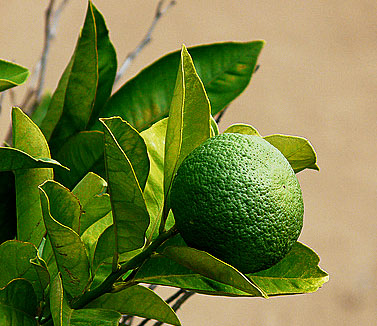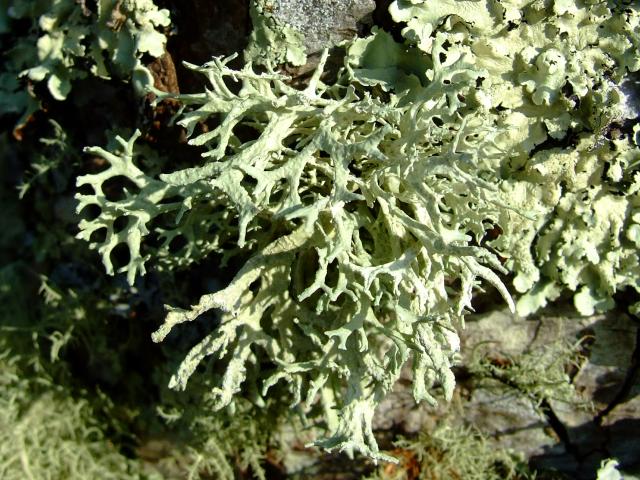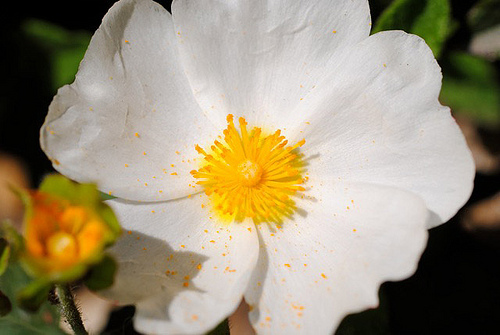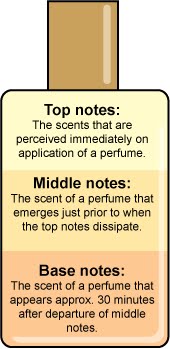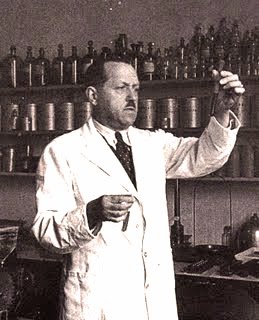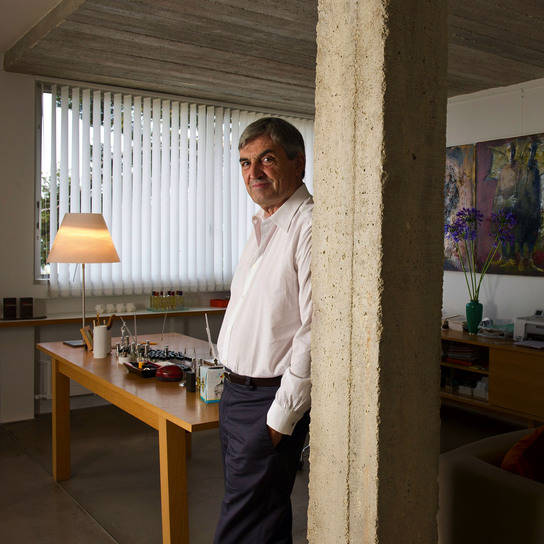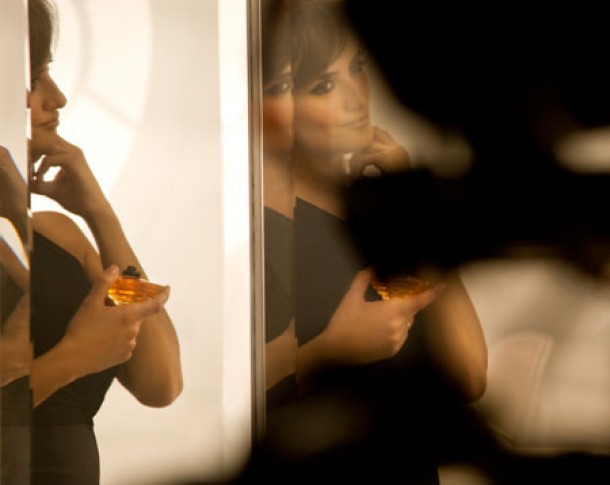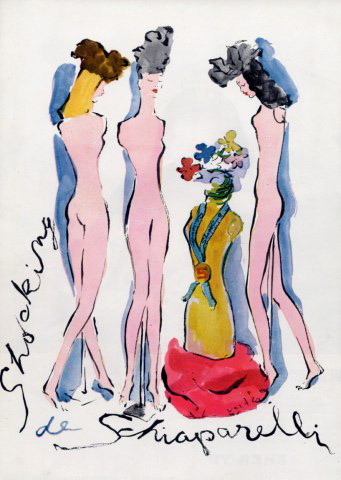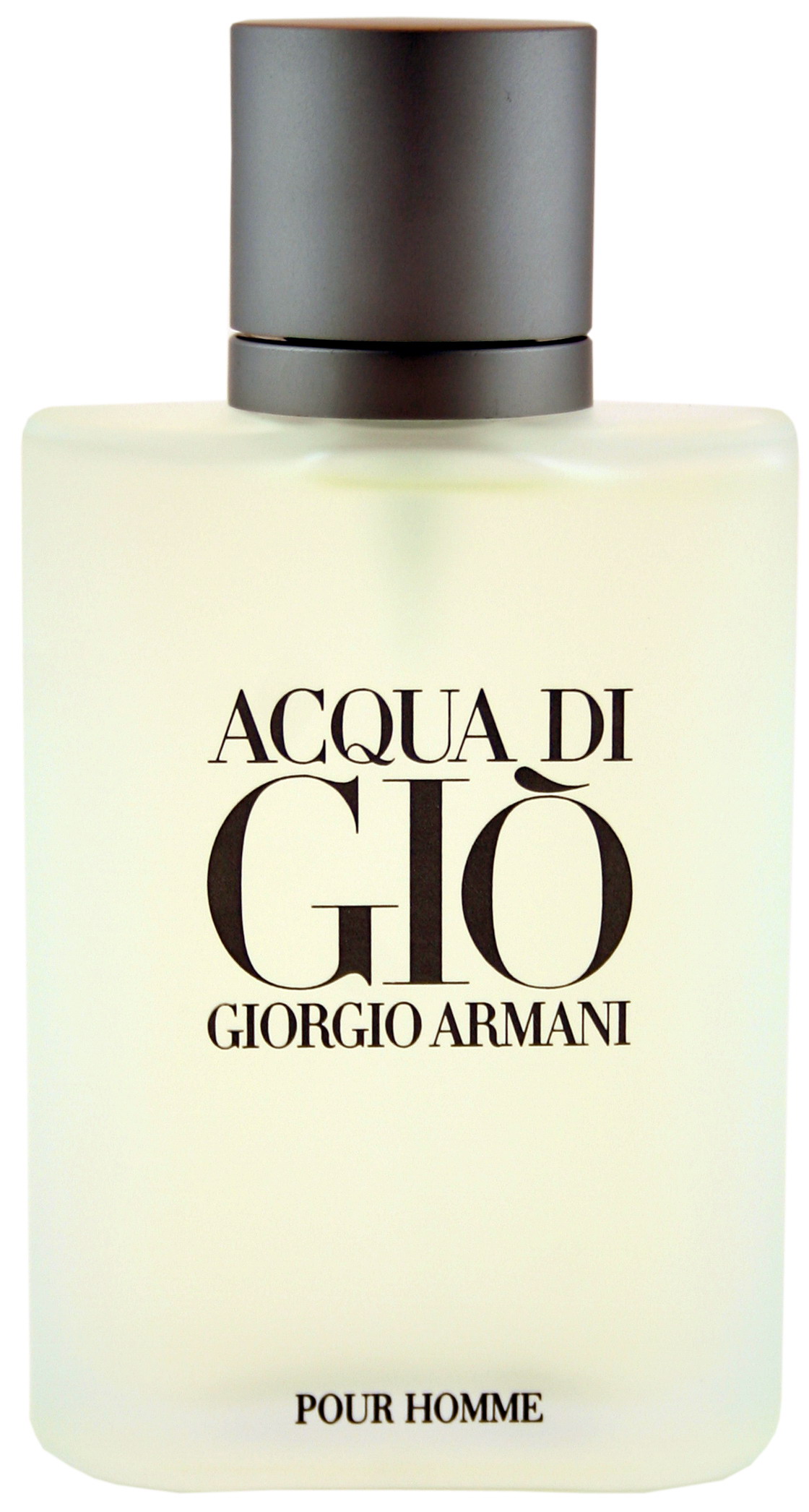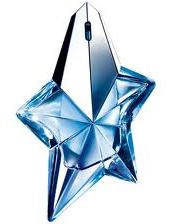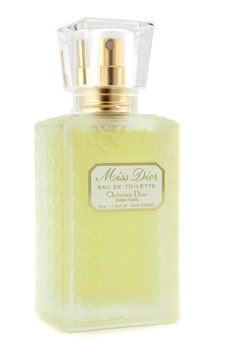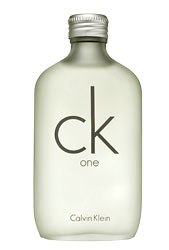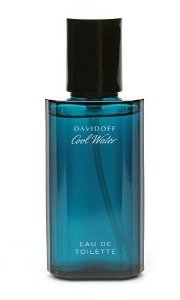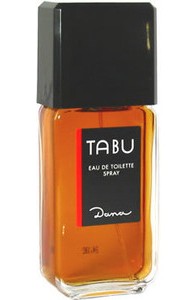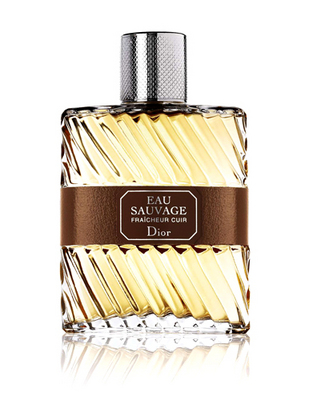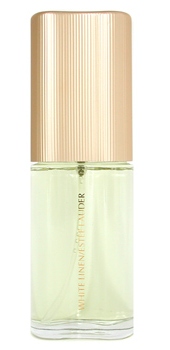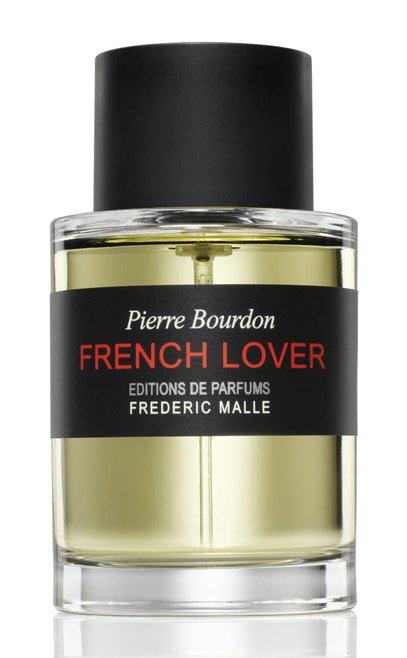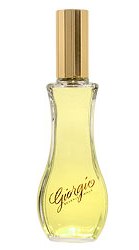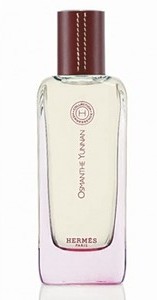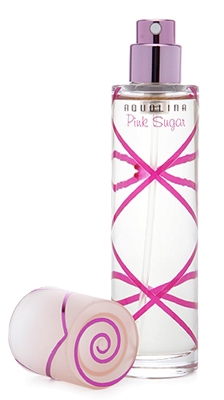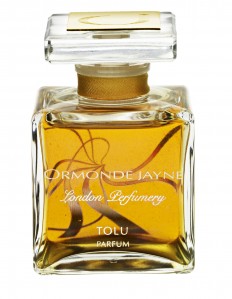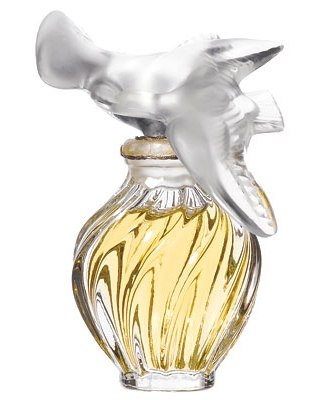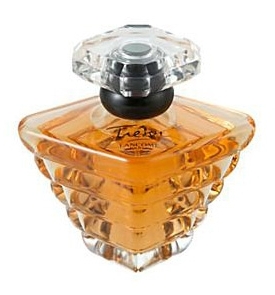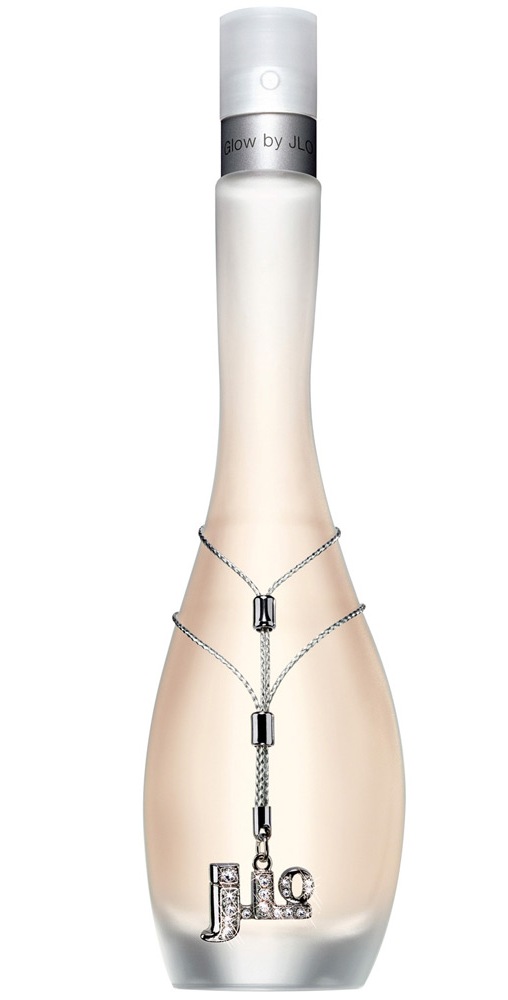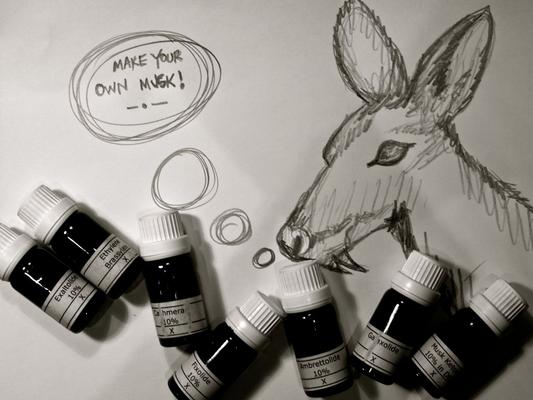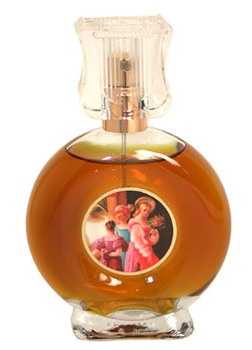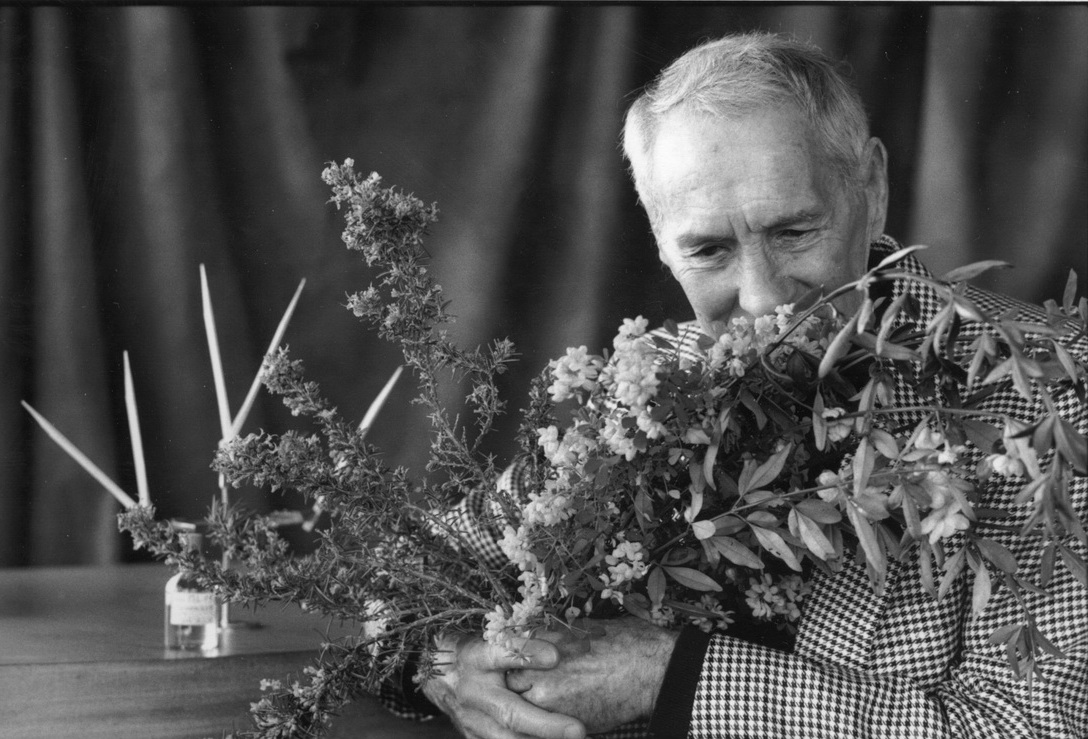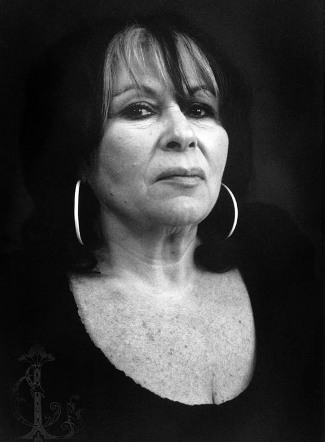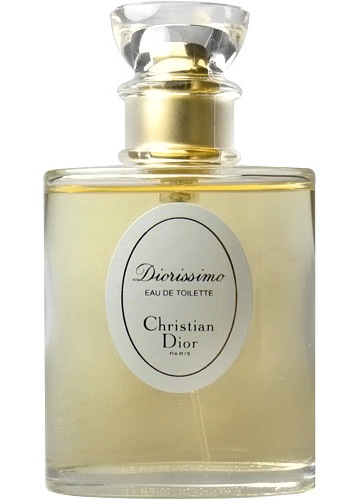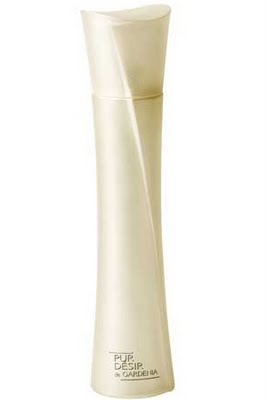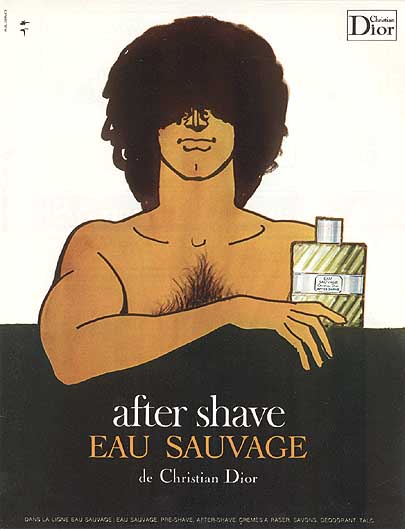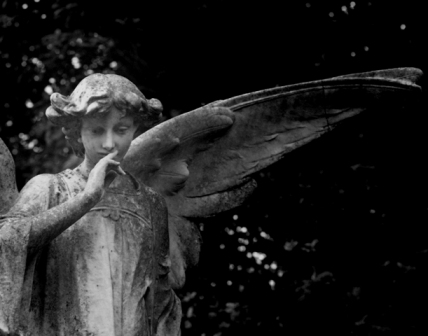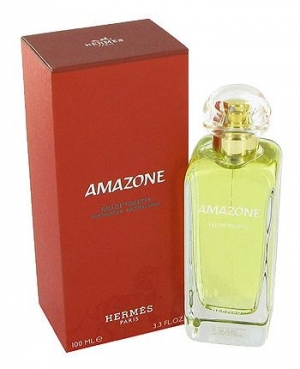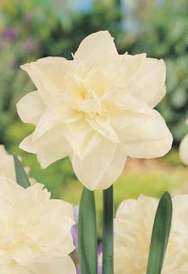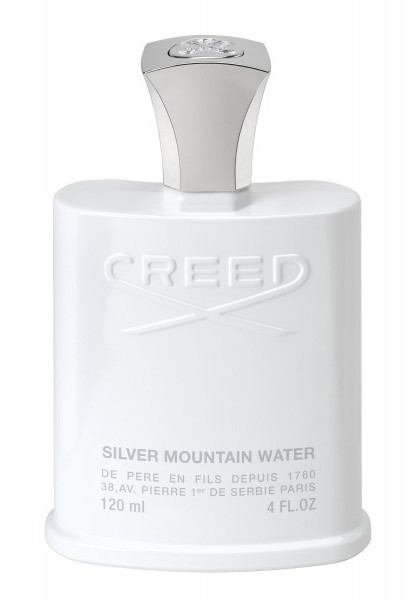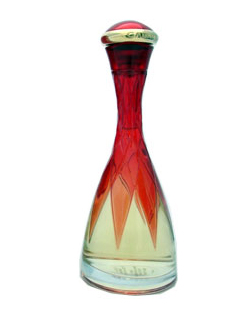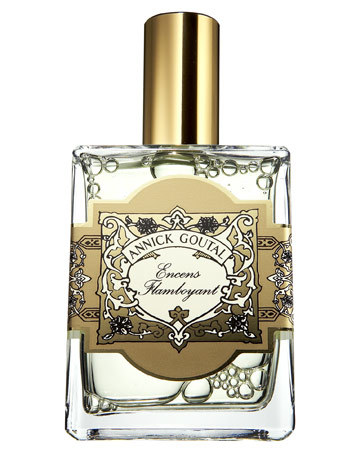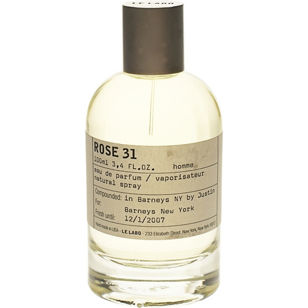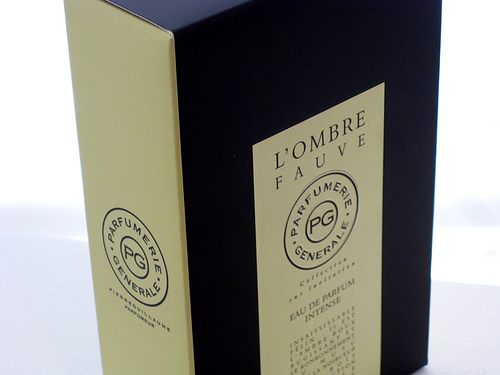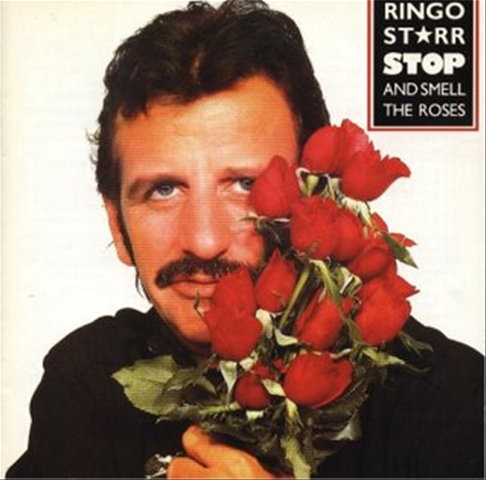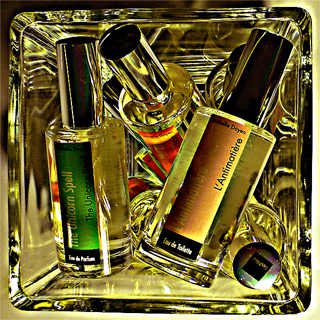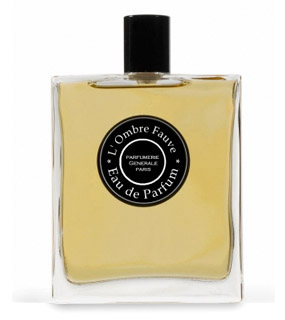The Fragrance Foundation and The Fifi Awards announced April 23, 2010, the Top Five Finalist in the category of Editorial Excellence in Fragrance Coverage Blog. The Perfume Magazine (formerly Sniffapalooza Magazine) garnered TWO nominations again in the TOP FIVE Finalists in the category of Editorial Excellence in Fragrance Coverage Blog. Congratulations to Mark David Boberick for his article "Scents My Sister Loved" and Michael Davis for "Real Men Wear" featured below as well as "Jean Claude Ellena Is All About The Dirt!" by Elena Vosnaki and "How Men Can Learn to Stop Worrying and Love the Unisex Fragrance" or "Gee, You Smell Terrific!" by Nathan Branch,which also placed Top Five FiFi for Editorial Excellence in Fragrance Coverage Blog. The Editorial Excellence in Fragrance Coverage Blog category is an historic and appreciative gesture on the part of The Fragrance Foundation for the quality work on online fragrance blog sites, legitimizing them as editorial vehicles. This is truly a great honor for us. The Perfume Magazine also placed two articles in the Top five in 2009 (see articles below), making The Perfume Magazine a four time Top Five Finalist for Editorial Excellence in Fragrance Coverage Blog. Congratulations to all of the wonderful contributors who placed The Perfume Magazine.com on the map again! A sincere heartfelt thanks to the Fragrance Foundation and FiFi Awards.
GO TO:
Elena Vosnaki - Jean Claude Ellena Is All About the DirtNathan Branch - How Men Can Learn to Stop Worrying and Love the Unisex
THIS JUST IN! The Perfume Magazine scores TWO
2012 FiFi Award Top-5 Finalist Nods
NEW YORK, NY - At the Fragrance Foundation's Annual FiFi Awards Finalists Breakfast, held on April 27, 2012 at the Mandarin Oriental Hotel, The Perfume Magazine walked away with TWO of the Top-5 Finalist positions for the category, Editorial Excellence In Fragrance Coverage: Blog or E-Zine, adding to the 4 (now 6) previous top five finalist nominations garnered by the Magazine in 2009 and 2010. We are truly honored that two articles from our Winter Issue, Journey to the Heart of Fragrance, by Neil Sternberg and On Making Sense Out of Scents, by Elena Vosnaki were among the 5 Finalists. The winner of the 2012 FiFi Award for Editorial Excellence In Fragrance Coverage; Blog or E-Zine was Victoria Frolova of Bois de Jasmin for her article, Luxury vs. Function In Perfumery. Congratulations to our Finalists and to Victoria Frolova on her 2012 FiFi Award winning article! For full-coverage on all of the 2012 Finalists, visit the FiFi Awards Blog. The FiFi Awards will be held on Monday, May 21st at Lincoln Center. The Perfume Magazine is incredibly thrilled to be recognized by The Fragrance Foundation, once again! Below, please view all of the articles that have placed Top Five in Editorial Excellence.
The Perfume Magazine's FiFi Top-5 Finalist Articles, 2012, 2010, 2009
Although not a fougère, Creed's Royal Scottish Lavender is a classic that has been in production since 1856. Royal Scottish Lavender opens with a crisp, clean lavender accompanied by effervescent citrus notes of bergamot and lemon. Lavender is somewhat short-lived but clove from the heart lends lavender some resonance. Clove adds a spicy kick to the scent and blends with lavender creating an olfactory illusion that lavender is still present after it fades. Vanilla and sandalwood anchor the base with a buttery smoothness.
I know what you're thinking...vanilla? Don't worry. You are not going to smell like your grandmother's kitchen or a bakery. Vanilla adds the barest trace of sweetness to soften the cloves and augment the clean, polished buttery wood accord in the base.
Real Men Wear… Leather
By Michael W. Davis
Obviously. It’s ‘ingrained’. That new car smell, our first perfectly worn in jacket, saddles, our first baseball glove; leather is in every man’s DNA.
How many of you guys (including yours truly) have wanted to look as tough and as cool as Marlon Brando or James Dean did in their leather jackets? Or did you gravitate towards the Euro-style and Gallic savoir faire of Jean Paul Belmondo or (I know you are out there) the head to toe ‘statement’ of Glenn Hughes from the ‘macho macho man’ ‘70s disco band The Village People? From the hide skins worn by our cavemen ancestors to the A–list sophistication of Diddy or Tom Ford, leather is part of a global masculine mythology.
Franco Wright and Adam Eastwood, co-owners and co-founders of Scent Bar and Lucky Scent agree. They had an idea and flew to France to consult with niche house, Indult about creating a scent that captures the legends of leather. According to Franco, “When we went to Paris last Fall, (September of 2007), interestingly enough, it was our very first trip to Paris, and our very first appointment was to meet with none other than Francis Kurkdjian— in fact, he is the first celebrated ‘nose’ we ever met since we started Luckyscent in 2001.(Writer’s note: Kurkdjian is the nose behind Gaultier’s Le Male, Narcsico for Her, and Ferragamo's F de Ferragamo)
"So we met in a small café and had a talk about perfumes, his creative process and ideas for the future. He was kind enough to show us his laboratory and we smelled a few of his works ‘in progress.”
Wright continues, “Months later, back in L.A., we began serious discussions with Indult... They had already marketed three feminine scents, so the idea of doing a masculine scent was especially appealing. We knew it had to be the same high caliber and extraordinary quality of the existing Indult scents. Yet we all agreed to give Francis total creative reign, essentially a blank canvas for him to create an exceptional masculine fragrance”, Franco Wright says, “I suggested to Indult that we could create ‘a study in Leather’; one feminine; one masculine.”
Soon after, Wright and Eastwood realized they really wanted to focus solely on the men’s version; but a masculine like no other –with nuances of the exotic, mystery and complexity. A few months later Reve en Cuir was born, and it was perfect...Owning a leather-centric fragrance is as essential to a man’s wardrobe as owning a well made pair of shoes. Classic leather scents such as Knize Ten and the leathery chypre Aramis are long-time favorites of many men, at all price points.
Although there are many scents that try to replicate that familiar, yet strangely mysterious smell of leather, few fragrances provide a multi-sensorial experience. Reve en Cuir from Indult is perfect for those who are looking for something more than a leather aroma.
Perfumer Francis Kurkdjian designed Reve en Cuir using the skill of a master architect. He created a rare fragrance that truly exemplifies perfect construction in the way it progresses on the skin. Reve en Cuir is a multifaceted progression of accords that are an interpretation of leather in various incarnations as opposed to merely replicating the smell of leather.
Reve en Cuir (trans. ‘dream in leather’) lives up to its name. The fragrance entertains with three distinct performances; all of which has the leather accord like a Greek Chorus running throughout.
Act 1 is Citrus Leather which introduces the scent. Citrus notes lend a very mild preface, more of an invitation--- a beckoning gesture that pulls you closer to the leather beneath. Act 2 is Smoked Wood and Leather evoking an image of a saddle on a wooden stand, warming next to a fireplace( my favorite ‘dialogue’ is the hint of clove at the beginning that slowly fades and seemingly morphs into a tendril of smoke.) The third and final act is Luscious Leather; it’s almost edible. Vanilla takes center stage in the finale, wrapped in a supple smooth leathery accord with just a touch of sweetness.
If you think Reve en Cuir smells great on you, hand the bottle to her. Make sure she gives it back.
New York Times' Chandler Burr gives Reve en Cuir Five Stars
'Leather — old, dark, smoky, heavy — is diabolically difficult to adapt to an accessible 21st-century format. Under the creative direction of Maselli, Wright and Eastwood, Kurkdjian has succeeded masterfully. Rêve is a delectable, edible, light-infused leather that is instantly legible, deliciously impossible, as if an Hermès belt had been candied and baked by a patissier. Technically perfect (it lasts and diffuses like clockwork), it is also an aesthetic triumph. Hermès’s own Kelly Calèche wonderfully modernized leather; Rêve en Cuir is even better, stronger and more daring. It is not just the leather you never imagined — it is also the gourmand you never imagined. Indeed, membership has its privileges.'
Chandler Burr, The Moment Blog - NYTimes.com: Scent Notes
Published in Sniffapalooza Magazine, October 1, 2009
Images courtesy of LuckyScent.com, Perfumer Francis Kurkdjian photo courtesy of Paris; By Appointment Only. Review courtesy of Chandler Burr and Lucky Scent
Additional images courtesy of Editor.
Creed Royal Scottish Lavender is the quintessential lavender fragrance with a timeless classic feel. There is nothing 'old fashioned' about it at all. But don't be surprised, guys, if the young ladies borrow your bottle.
Bottle image courtesy of House of Creed and Adam Brecht, other images courtesy of Editor
Do real men actually wear pink? Some do, but I don't. Trust me when I say it has nothing to do with insecurities. I just don't look good in pink.
However, I do wear lavender. Not the pastel purple color either. I wear the scent of lavender. When I am in the mood for lavender, only Creed Royal Scottish Lavender can satisfy my craving.
The history and use of lavender has been documented as far back as the ancient Egyptians who used it in mummification and making cosmetics.
By Michael Davis
In this collection, Michael Davis explores various fragrances that men could and shoud wear.
Real Men Wear…Violets
By Michael W. Davis
‘Shrinking’ is the first word that springs to mind when one mentions violets. Shrinkage is rarely a good thing in a man’s world. Another metaphor used with
violets is ‘shy’; let’s just say a real man wants to be seen as daring. Time to clear up violets’ wallflower reputation.
When the Mongol-Tatar forces-- invaded Russia in the 13th century, they were constantly moving and lived off the land. According to Gmelin, a 17th century German scientist who explored Northern Persia, the Mongol-Tatars ate a thick soup made from violet roots that provided adequate sustenance as they advanced.
My grandmother would say this soup will put “hair on your chest”.
Led by Batu Khan, a grandson of Gengis Khan, Mongol-Tatar armies destroyed many Russian cities including Kiev, Vladimir and Moscow. The advancing horde continued to the "Great Sea" (Atlantic Ocean).
[Writer’s note: Violets can be ‘invasive’ because of their ability to spread quickly and overtake lawns and gardens. I find it interesting that this invasive plant provided fuel for an invasion.]
One of the world’s most famous military leaders, Napoleon Bonaparte, held a lifelong passion for violets. Napoleon had fond memories of the sweet scent of the violets that he remembered from his childhood in Corsica. His first wife, Josephine, wore violets on her wedding day and Napoleon gave her violets each year on their wedding anniversary. Ok, so real men are romantic; nothing wrong there.
It’s high time to cast aside the stereotype of the violet. They are flowers with bold charm and strong roots. Violets have a sweetness that can charm an emperor and roots hearty enough to feed an army.
And to make one of the most beautifully constructed fragrances of all time.
While in exile on the island of Elba, Napoleon secretly informed his friends that he would return to France with the violets in the spring.
His supporters adopted the violet as a symbol of his returns and often referred to him as Caporal Violet or La Père Violet. In addition, a popular postcard circulated during this time depicted a bouquet of violets with hidden outlines of Napoleon, Marie Louise and of their three year old son, Charles, King of Rome.
Espionage…real men stuff…
Bois de Violette by Serge Lutens showcases the multifaceted nature of violets better than any fragrance
I have worn. The violets and violet leaves in Bois De Violette are bold, charismatic and command your attention; a stalwart accord with powerful sustain. Although bold and resilient, the violet notes provide a soft, sweet welcome for their woody, cedar partner.
In Bois de Violette, perfumer Christopher Sheldrake created a perfume reminiscent of the sweet, Corsican violets of Napoleon’s childhood.
The crystalline confectionery sweetness of the violets is like a light sugar glaze. The opening sweetness is quite potent but settles quickly without ever becoming cloying. As the intense sweetness fades to a transparent glaze, a warm honeyed cedar becomes evident but not dominant. Cedar and violet accords are blended yet distinct as if they are bound in a helical spiral. Bois de Violette eventually spirals down to a mildly spiced woody base that pays homage to its inspiration, Shiseido Feminitè du Bois.


Influenced by the Egyptians, the Ancient Greeks used lavender in making perfume. The Romans found a variety of uses for lavender form treating wounds to using it as an aphrodisiac. During the reign of Henry VIII, ladies of the era used lavender to scent linens and repel insects. Queen Victoria used lavender so much that it developed the stigma of being an 'old lady' smell. In modern times, lavender plays an essential ingredient in fougères, which have been popular with men for years.
Michael W. Davis is a writer and management consultant who specializes in training and development. Michael's foray into the field of fragrance began many years ago when he received a bottle of Aramis as a Christmas gift and he has been collecting, wearing, and testing fragrances since. Michael holds a B.S. in psychology, an M.S. in organizational behavior/human resource management and has many interests outside his professional career. He is an avid fan of bull riding, auto racing, muscle cars, photography, music, art, Thai and Indian cuisine, and philosophy to name a few. Michael is also a fitness and nutrition buff does his best to lead a healthy lifestyle.
This is his first Top Five Finalist nomination for Editorial Excellence in Fragrance Coverage 2009 Blog.
Published in Sniffapalooza Magazine, January 6, 2009. Credits: The Playful Eye by Julian Rothenstein and Mel Gooding, 1999; Chronicle Books, SF. Original engraving by Canu: 1815 . Bois de Violette bottle image courtesy of Aedes Venustus and Serge Lutens website. Violet photograph courtesy of Culver Edu sigma/kappa. Additional images courtesy of Editor /Stock Photos. Violet postcard circulated during Napoleon’s exile. Can you find the three hidden faces of Napoleon, Marie Louise and their Son? The print shown is from an engraving by Canu in 1815. Copies were circulated among the supporters of the exiled Emperor. They would toast, "Corporal Violet." Credits: The Playful Eye by Julian Rothenstein and Mel Gooding, 1999; Chronicle Books, SF. Original engraving by Canu: 1815 . Bois de Violette bottle image courtesy of Aedes Venustus and Serge Lutens website. Violet photograph courtesy of Culver Edu sigma/kappa. Additional images courtesy of Editor /Stock Photos
Real Men Wear… Perles
By Michael W. Davis
As I was getting ready to leave for Atlanta Motor Speedway, I realized I had forgotten my "Perles".
I know what you’re thinking; are you kidding? Pearls on a guy? At one of the country’s fastest race tracks? A place that practically oozes testosterone from the asphalt? You can stop your internal dialogue and questions because I’m not wearing a pearl necklace nor participating in a drag race.
Neither am I referring to the ubiquitous strands of Mardi Gras beads that seem to be ever present at sporting events.
My pearls are Perles de Lalique.
I’ve never been one to follow someone else’s rules of what I can or should wear. The driving force behind my fragrance choices is my personal taste and the reactions of others, such as “What are you wearing? You smell amazing!”
Perfumer Nathalie Lorson created Perles de Lalique for Lalique as a modern chypré that feels like silky smooth strands of pearls. A powdery Orris imitates this feel of pearls giving the scent an understated elegance. Bulgarian rose adds a rich sweet floral to the creamy Orris. Bourbon pepper cuts through the opening with a sharp spicy edge but it’s not enough pepper to dominate the scent and it’s also blended with Indonesian patchouli in the heart. Cashmere woods, oak moss and vetiver finish the fragrance with mossy woods.
Perles de Lalique is very versatile and has a weight that fits all seasons and situations. It is warm and inviting on a cold winter’s night and invigorating and refreshing in the summer. The quiet unassuming presence of the scent makes it perfect for both casual and formal wear.
Inspired by Laliques’s cactus-spike design, the eau de parfum flacon is an opaque glass bottle lined with glass beads. The glass bottle and cap resemble polished and frosted crystal. A pure parfum version is available in a decidedly frou-frou crystal flacon but Perles de Lalique parfum is a spicy, woody mossy experience that wears just as well on a man as women
Remember guys, don’t forget your Perles. And it’s ok to share them with her.
Bottle images courtesy of Saks' Fifth Avenue. Other images courtesy of Michael Davis and Editor/Stock photos
Jean Claude Ellena Is All About The Dirt!
By Elena Vosnaki
The above somewhat shocking title is meant to grab your attention, dear reader.
You who have been conditioned to believe that Jean Claude Ellena, current in-house perfumer for Hermès and perfumery super-star for scentophiles everywhere, is producing limpid, minimalist compositions drenched in pale sunlight which evoke water sprites and eunuchs. You got the minimalist part correct, no doubt, to which I will revert shortly, but not the rest. Why? This is the point I will try to elaborate on and prove today.
First of all, the word “dirt” needs to be defined. Per Merriam Webster’s Dictionary, dirt means “loose or packed soil or sand (earth)”, a “filthy or soiling substance” (such as mud, dust, or grime) or “excrement”. I omit the metaphorical uses of the word, because they do not bear any olfactory connotations. Therefore there is the kind of dirt that makes you think of gardening ~or tetanus shots for us less wholesome souls; and then there is the kind that evokes unwashed armpits and impolite parts. Although it would be easier to simply claim and prove that Jean Claude Ellena has an affinity for the former, I will venture to further claim that he also utilizes a refined version of the latter with much conviction and pleasure. (Rhypophobiacs, it’s time to stop reading I guess)
Opposed as Ellena is to the “cheap tricks” of synthetic “clean” musks that provide the feel of laundry-clean to masses of consumers (thanks to associations with their overabundance in detergents and fabric softeners), he also looks down on the internationalist school of wanting to cajole the Asian market through transparent wan compositions and admires the gustatory trajectory that heavy-weights such as Angel and Lolita Lempicka walk on. Yet he aims to provide a refined new school through a vision of sparseness as he recently asserted among his collegues at a conference of La Société Française des Parfumeurs. Nevertheless this personal manifesto embraces the noble and controversial touch of dirt.
Although Jean Claude is not as famous as his mentor Edmond Roudnitska for the creation of private gardens, he is nevertheless very much a product of Grasse and la coté Provençal. It has long been my belief that the lapping of the Mediterranean Sea bestows sensuality in the people who are born or live close by to its coasts and a strong tie with the earth. Ellena appears to be a person immersed in sensuality in tandem with a keen intellect: His little confessions of famille in which he placed olfactory mementos under the napkins of everyone on Christmas Day and the fun of uncovering them; his reminiscences about a friend of his mother’s who avoided him and his memory of her Miss Dior creating an antipathy for the fragrance till she passed; his creations of tuck-in-bed olfactory tales for his children; his love of indolic jasmine and old, worn pullovers; his pleasure in having his cat leave an odorous mark of familiarity on him; and his sensual talk about the fatty, round, fleshy element of the natural essences which lent their caressing touch on fragrances of the time of his youth (the 60s) ~all conspire to assert that idea.
One of his favorite ingredients is vetiver (the essential oil along with vetiveryl acetate and vetiverol). To quote Chandler Burr “Vetiver Huile Essentialle from Haiti smells like a Third World dirt floor and Vetiver Bourbon from Isle de Réunion smells like a Third World dirt floor with cigar butts”. Ellena used vetiver in almost everything: In Vetiver Tonka (Hermessences) it’s the contrapuntal point to the coumarinic taste of tonka beans; in Terre d’Hermès along with lots of woody floraliser Iso E-super it gives an earthy touch to what is essentially a cut bergamot dripping juice on a smooth rock; in Un Jardin Après la Mousson it gives the sense of bog water and silent gloom after the tropical storm.
He has an affinity for the dusty green of tomato leaf (vert de tomate) which is “fresh as a slender branch ripped off a tree and rich as a strong beef bouillon” [1] and which he put in Eau de Campagne for Sisley, his first creation from 1974. He also likes carrot seed oil (grain de carotte) with its earthy, iris-almost aroma, which is the jack in his card-tricks producing effects of flowers (osmanthus, freesia), fruit (mango) or even tea! He used it in Un Jardin sur le Nil alongside the gently smoky ambiance of incense, a theme that was also explored in Eau Parfumée au thé vert for Bulgari, incidentally the fragrance which put Ellena on the map, combining ionone beta (violet) with hedione (jasmine) and carrot root to give the effect of green tea steam. His Kelly Calèche uses the sweetly powdery and slightly catty odor of mimosa and upturned roots of iris to give the subtle florancy he experienced upon visiting the vaults of Hermès saddlers for inspiration. [2] Mimosa and Cassie provide the backdrop to Eau d’Hiver as well, redolent of a fluffy goose-down puff that is in direct conversation with the macaroons of Après l’Ondée by Guerlain. Un Jardin en Mediteranée rests on an accord of stemone and octolactone gamma, thus evoking bitter fig-leaves soiled by the gusts of wind that make the earth rise at Midi.
But Ellena’s appreciation for dirt of another magnitude is not without olfactory exempla either. Perhaps it can be traced through his documented admiration [3] for the fantastically ripe Eau d’Hermès from 1951. Such is the legendary scarcisness of his fans (“only 40 people in France like it and that’s including myself” Ellena says) that Denyse Beaulieu, a writer and friend who loves it as well, upon picking its trail on an older gentleman besides her while buying books in Paris became convinced she had a brief glimpse of Jean Claude Ellena himself! It helped that the gentleman congratulated her of her taste when asked for confirmation on what he wore…
Jean Claude Ellena
Composed by Edmond Roudnitska as a progression from his iconic Femme, originally issued in only 1500 bottles and re-issued faithfully following the original formula, Eau d’Hermès is the prototype of animalistic cologne for someone like Michel Picolli in Belle de Jour and according to Ellena “a school of realism, the smell of the saddle”. A hint of leather, copious yet presentable amounts of sweaty cumin and spices (cardamom, coriander, cinnamon, and clove), and the subtle sexiness of jasmine coupled with filthy labdanum, fecal suggestions of civet opening up the more demure elements of lavender, sage, and petit grain: the whole smells like a living being that has something indefinably unsettling about him. Ellena’s own homage to the above fragrance, the masterful Déclaration, conjures the even sweatier vibe of a young hunk in pressed chinos, slowly enjoying cardamom-laced black tea. In a way Ellena took the dirty elements of Eau d’Hermès, passed them through a sieve and re-arranged them into a transparent, layered infrastructure that is utterly modern.
The lush opulence of night-blooming jasmine in the balconies overlooking the coast can be found in La Haie Fleurie de Hameau for L’artisan Parfumeur and in First by Van Cleef: he used not one but four different jasmine ingredients for the latter, full of animalic indoles, to achieve this effect. Even such a commonly accounted for smell as that of lavender, that quintessential prim note of cleanness (coming from the Latin lavare ~to wash~ and used since Roman times to scent linen), took an uncharted flight into wilder arpeggios on its odor-profile keyboard by embracing its darker licorice-like extremities in Brin de Reglisse (Hermessences). The gourmand along with the fecal lies in subtle things as well: Ellena often produces touches immersed in isobutyl phenyl acetate (sweet chamomile), ethyl vanillin (rich vanilla) and natural civet to his audience; he slowly vibrates them and chocolate ganache magically arises: the smell of excrement is crucial to the creation of exceptional chocolate, he confides. [4] Perhaps if we view his other gustatory creations under such a prism the apple-pie of Ambre Narguilé, the gin and tonic of Angeliques Sous la Pluie and the cool pepperiness enhanced by an overdose of Iso E-super of Poivre Samarkande take on a sinister nuance.
The sulfurous substance that hides in the heart of grapefruit is another favorite game: In Love Again bypasses the problem of too sylfurous (and thus too garlic-like) by opting for a synthesized composition, yet you smell the bittersweet rind that has a hint of decay. Rose Ikebana reworks the grapefruit theme with a gourmand lacing of licorice. In Elixir des Merveilles the orange rind is candied but as if putrefying from the inside, redolent of proper French perfumes of yore. In Bigarade Concentrée for Frederick Malle the bitter austerity of Seville orange is given a point of departure thanks to a rubbery accent that comes from out of the blue. Cassis Buds with their odor of cat urine have pride of place in Ellena’s carousel of essences, as does the brutal iris nitrile (nitriles are compounds with a C≡N functional group). Rose Poivrée and Divine Bergamot for the Different Company ~a self-funded and masterminded project which should reveal the man’s inner vision~ were divinely animalistic and dirty in every sense of the word. Ellena has been honing his vision for years, subtracting rather than adding, paring his materials into no more than 200, with the challenge of coming up with unforeseen surprises and novel magical tricks of jolting us out of our preconceptions. The man and his work is perhaps the greatest illusion of them all: he’s all about the dirt, really!
*You might have noticed I excluded Rumba for Balenciaga from his oeuvre’s scrutiny: that’s because it’s more Ron Winnegrad’s work than Jean Claude’s, I feel.
Notes:
[1]Chandler Burr, The Perfect Scent, Henry Holt 2007, [2]Hermès Ailles http://usa.hermes.com, [3]From an interview on French TV
[4]Chandler Burr, The Perfect Scent, Henry Holt 2007, p.249
*Image credits: La toilette intime by Antoine Watteau, courtesy of Wikimedia Commons, The Earth inside, photo taken by 10centdesigner on Flickr, Jean Claude Ellena and his essences, courtesy of Hermes
Elena Vosnaki is a multi-lingual historian and Bronze Age archaeologist from Greece who has been collecting fragrances since she can remember and writing about them in various publications around the world. After getting her degree in Musical studies the realization that perfumery is an art-form as well dawned on her and more formal studying of the fiber of that art form began continuing to this day. To that end she created perfumeshrine.com, a site dedicated to the finer pleasures in life.
Jean Claude Ellena
Journey to the Heart of Fragrance
December 30, 2011
By Neil T. Sternberg
Co-Founder, creator and artist of A Dozen Roses, Sandy Cataldo, signing bottles
There’s something magical about New York City during the holidays. Despite the cold and the crowds – and even dodging the occasional shower – there is a feeling of warmth and anticipation that you find everywhere.
Sitting alone in a crowded corner pub in Manhattan, finishing a late dinner, I was feeling it. But it wasn’t just holiday fragrance shopping I was anticipating. In a few short hours, I would be living a fragrance geek’s dream - inside one of the “big boys” of fragrance.
When IFF invited me to visit their Creative Laboratory in New York City, they didn’t have to wait for a reply. Ever since I picked up Chandler Burr’s wonderful book, The Perfect Scent, I’ve been trying to piece together a true mental picture of the F&F industry’s innards. Burr made it all sound fascinating, and I wanted more. I wanted to smell it all. The scientist in me wanted to learn IFF’s deepest secrets – to see what it was that made them a two-and-a-half-billion-dollar business, with offices in the greatest cities of the world. Would they hint at what they were up to? Would they tantalize me with their proprietary technology? Would they show me their crown jewels?
Done with dessert, I pulled out my wallet. A whitish, rounded quartz pebble fell out of my pocket and clattered across the pub’s wooden floor. I leaned over, picked it up, and put it back into my pocket. Lost in the cacophony of the place, I don’t think anybody even noticed. That pebble is important to me. People may think it’s silly or superstitious – especially for a scientist – but I carry that pebble, from a beautiful forest in Kentucky, for spiritual reasons. My dreams tell me that my spirit will go there someday, and I respect the goodness and the power of those dreams. When it comes down to brass tacks, I tend to trust the complicated predictions of modern science over the simple traditions of my very distant ancestors Thanks to my mother’s reverence for her heritage, and my father’s respect for native culture, I try to respect the importance of those traditions. And even more than that, my gut just tells me that perhaps we underestimate the power of spirit.
Making sure I had my pebble, I paid my bill, returned to my hotel room, and got a good night’s sleep. Perhaps I had dreams of GC-MS, olfactory receptors, and rational odorant design, but if so, I don’t remember them.
The building which houses the IFF Creative Laboratory and Sales Office in New York City is impressive. It’s not a skyscraper by any means. However, I quickly discovered how difficult it is to fit into a single camera shot. IFF also has impressive security, despite its outward minimalism. What you see is one door, one elevator, and one guard - who is certainly bigger than you. If you’re expected, and he likes all of your answers, you get on the elevator.
When you get off on the designated floor, there is a small landing area. The IFF lobby is like a shopping trip to Sephora, and more. Though the room is redecorated periodically, parts of it are too good to change. For starters, there is a garden of ornamental vetiver arranged in squares in the tiled floor. Each square gives rise to a cube of waving green spikes, with a bottle of perfume floating above on a thin, metal pedestal. The fragrances are all current and familiar – especially to this lover of modern fragrance. I was oohing and aahing over the likes of Calvin Klein’s new ck one shock for him, the ladies’ Euphoria, Keith Urban Phoenix, the Bond no.9 I♥NY trio, and Beyoncé’s new fragrance, Pulse. And yes – you can pick them up, sniff them, and even spray if you like.
Next to these, a quiet and sobering timeline runs the length of one wall. It charts the growth of IFF from a single-owner immigrant business in the 1800’s, to today’s multinational corporation. Appearing below the timeline, momentous world events like Einstein’s publication of general relativity, and the Cultural Revolution in China. Above the scale, important company events, such as the merger which gave IFF its name, and the opening of the new Creative Center in Shanghai.
NEIL STERNBERG | Contributor
Neil Sternberg is a fragrance fan from the American heartland. He is a regular contributor to Basenotes and the Basenotes forums, il Mondo di Odore blog and other blogs. You can also find him at his own blog at http://cologniac.wordpress.com/. You can also follow him on twitter at @cologniac.
New York City: 63rd and Broadway
IFF Building: 57th Street and 10th Avenue
Nilesh Ragha: Head of IFF Perfume Laboratory
Ron Winnegrad: Head of Perfumery School
Chiaki Nomura: Perfumer and IFF Perfumery School Graduate
Mackenzie Reilly: Researcher
The Perfume Magazine welcomes tour de force journalist, Neil Sternberg, with this amazing, one-of-a-kind journey into the world of the famous International Flavors and Fragrances. Join us as we travel with him into the heart of fragrance in this fascinating, in-depth account of the offices and labs of the perfume industry. A must read for all lovers of perfume.
All images provided by author. Additional images courtesy from IFF website supplied by Editor.
Headspace Technology.jpeg. courtesy of theatlantic.com
EuroPan Bakery Café: Columbus Avenue and Broadway
Hungry and restless after getting back to my hotel room, I headed out into the city night. Bright lights shimmered on the pavement of the still-busy streets. I took a photograph of a Chanel advertisement at a bus stop - thankful that I was still enough of a rube that such a thing held wonder for me. I wandered until I found the comfort of a brightly lit deli, beckoning in the darkness. I reminisced on the day’s events. I am always touched by the humility of perfumers. Perfumers realize they’re not the only ones who are passionate about their creations, nor are they the only ones who deserve credit. Perfumers – more than anybody else - understand that the fragrances they create - no matter how much work they put into them - actually belong to the whole team.
Whether it was the people in the lab who actually constructed it, the people who guided the development, or the people who negotiated and sold it, the perfumer could not have done it alone. And it goes even further. In a way, every person who ever came to work at IFF helped make those fragrances. From the old veteran, to the young student - they all did it. That’s why the impressive row of famously named, cobalt blue bottles spans the length of the lobby. A lot of very talented and very passionate people worked on those fragrances.
It’s a pattern that echoes not just through the industry, but throughout the universe. We see it in the flower, where groups of atoms, and then molecules, come together to create the scent we remember. We see it in the art of fragrance, where beautiful things come together to create something of greater beauty still. We see it in people, who – together – can turn increasingly vivid dreams into ideas, and increasingly complex ideas into reality.
But what’s the force behind it? If not gravity or chemistry, what brings things together in such a way that the magic happens?
I smiled at the obvious answer, and felt for the tiny, plush bear in my shirt pocket. It was still there, just like the quartz pebble in my pants pocket. I could feel my eyes growing moist, but they were happy tears.
People tend to underestimate the power of spirit - the power of the heart. But not everybody.
Mackenzie Reilly: Researcher
The thing that startled me about talking to Mackenzie was simply this: I expected that I would get the most radical, mind-expanding, olfactory stuff from the company veterans. I did not expect that I would get it from the young woman barely out of school. Some of the projects Mackenzie is working on - I can’t mention. But the most radical stuff? No problem. I can tell you all about that. This, despite the fact that it completely changed everything I ever thought about humans and fragrance.
Well, along comes Mackenzie with research about various tribes in Africa. About how their osmology (the olfactory analog of cosmology) and their spirituality are both related and differentiated. We’ve been debating the idiosyncracies of modernist Western and Middle-Eastern fragrance traditions as if they were the only games in town. Far from it.
The variability of native African osmologies not only mirrors the linguistic and cultural diversity of the tribes – it goes where Western fragrance has never even dared to go. The point is this. We think we know a lot about fragrance, but honestly, we don’t. The folks at IFF are actively exploring the things we don’t understand, and trying to get a grip on them. I can think of no better illustration of this, than the fact that Mackenzie has presented her extensive and fascinating research to the senior perfumers at IFF.
The next time that somebody at IFF authors a groundbreaking fragrance, using some new component that everybody else missed, it may actually be based on insight from a culture that has never even heard of “perfume”.
You know the truth. We all live in dread that the things that make fragrance great are going to disappear, leaving us with insipid petrochemical juices that we can no longer love. At an emotional level, it’s almost a metaphor for the future of our planet. Well, you may not realize this, but IFF is way ahead of us on this one. Losing another important fragrance component is not an option for these folks. If Kip Cleverley has his way, there will be no more endangered species in your bottle of fragrance.
Kip is a very nice, patient guy, and it’s a good thing. His is not an easy job. If you’re a perfumer, you can let your emotions and creativity run wild, though you may have to pay attention to a few boundaries. But boundaries are somebody else’s job. Well, not if you’re Kip. Sustainability may be today’s buzzword, but it’s actually part of a deeper and more fascinating thing. In some ways, it’s the leading edge of a real awakening to long-term thinking in the corporate world. In this case, it means making sure that IFF can get what it needs to keep making great fragrances indefinitely. Long-term thinking requires tedious, laborious, and risky calculations. Kip sweats it out using spreadsheets, projections, and a lot of number-crunching. He doesn’t go into things with preconceived notions, either. People sometimes look at the industry and see a conspiracy to dump “synthetics” on the masses, but the reality isn’t that simple, and industry behavior isn’t that stereotypical. Naturals are not only a big winner in the marketplace – they are generally more sustainable, and IFF knows it – even better than its customers do.
But on the flip side, when something is endangered because it’s not being harvested ethically, then sustainability thinking will tell you that synthetic analogs are the smart, ethical answer. This is what happened with sassafras trees, which were being chopped down in Asia to the point of near-rarity. IFF switched to its own molecule, Helional, before it was too late. The number of trees being saved is now estimated at 110,000 per year. The point is simple – natural is good, but sometimes you have to do the right thing for nature’s sake.
He fancies that he might take a class in the IFF perfumery school someday, so that he can better understand fragrance.
I think Kip understands fragrance just fine. He simply understands the part that’s happening in our future.
Ron Winnegrad: Head of Perfumery School
Whatever you could have possibly thought the IFF perfumery school might be like, I can say this for sure. You were wrong. The IFF perfumery school is totally unlike anything you could ever have expected it to be. Throughout my visit, people spoke of Ron Winnegrad with a very unique sense of admiration. OK – I’ll say it. They love the guy. When I met Ron, I understood why. Ron is more than a perfumer, and more than a teacher. And he is more than a friendly person who wears amazingly flowery shirts. He is an intensely spiritual person. His warm presence literally fills the school. You can feel it flowing through every room, every hallway and every person. You cannot meet Ron and not be touched.
It is absolutely no surprise that the current president of IFF’s fragrance division, Nicolas Mirzayantz, snatched up Ron when he got the chance. Although Ron has a body of work in classic and iconic fragrances, his true love is teaching. The creation of IFF’s perfumery school seems to have been one of those carpe diem moments for both Ron and Nicolas.
The school itself reflects Ron’s magic. If I had to describe the school, it would be as a cross between kindergarten and an Ivy League chemistry laboratory. Before you get to the shiny new laboratory filled with neat rows of glass bottles and stainless steel apparatus, you must pass by Ron’s office. And Ron’s office is filled with plush bears. You know what I’m talking about. Teddy bears. Overflowing with them.
One of them is named Grizz. But Grizz isn’t just an ordinary teddy bear. Grizz wears pins and decorations that were placed upon him by representatives of some of the most powerful companies in the beauty industry. By some very important people in the fragrance industry and Ron’s appreciative students. I promised not to say who has come in those doors to pay homage to Grizz, but I can tell you this. Grizz, like the gentle person who cares for him - has accumulated vast amounts of power. Power not of the mind or the body, but of the heart.
Ron uses his awesome but gentle power to break down the emotional barriers of his students. These are the barriers that prevent them from feeling. From learning. From becoming world-class perfumers. When Ron relates the story of how he did this with one student, it is so affecting that I find myself having to hold back tears. Ron spots this immediately. He is able to read people like books.
He teaches perfumery like a martial art - literally. He wants his students to read perfumes – to feel perfumes – to understand them at an almost subconscious level. We take a moment to walk through the laboratory. Far more interesting than the scientific equipment – especially to a scientist who has seen it already - is a simple but prominent bulletin board with quotes and student creations. It is exactly like you might find in a kindergarten – or a think tank. This is the Wall of Inspiration. Included among the student works are powerful quotations from the likes of Gandhi. When a student feels like they just can’t do something, he or she can go to the Wall for encouragement.
Before we leave the school, Ron opens a drawer and gives me something. He makes me promise that I will keep it. It is a small teddy bear, not much bigger than my thumb. He didn’t have to worry that I wouldn’t value it. Today, that little bear guards my arrowheads, stone animal fetishes, and other important things.
Nilesh Ragha: Head of Perfume Laboratory
Nilesh Ragha loves his job. He works in the best-smelling laboratory on the planet. The smell is even better than the fragrance counter at Saks, and much more intense. It is literally the opposite of a fragrance-free workplace. I smile at the thought that I am sniffing not merely famous perfumes, but the famous perfumes of tomorrow. It’s like a preview of next year’s fragrance fashions - and let me tell you – they have to be good. There is one component that you’re definitely going to be talking about. The IFF perfume laboratory is where the perfume is actually put together.
“Sometimes, it’s like an emergency room. It can be very hectic. The perfumer may run in here and stand right next to the technician - waiting to sniff something the moment it is finished.”
In the old days, the perfumer and his or her technician worked side-by-side at the laboratory bench. The technician would mix, and the perfumer would sniff. That’s how the old classics were created.
But times have changed, and so has the physical layout. The new setup is almost an admission that the perfume lab is what is really central to the operation. Which is not to say that the perfumers are not valued.
They occupy some very plush offices surrounding the perfume lab. Furthermore, the lab is perforated with numerous access hallways leading straight out to them. Standing at key intersections in the perfume lab, you can look down multiple hallways, and almost see the perfumers at work. The perfumers can – literally - be out of their chairs and standing in the lab in seconds.
Denise Gillen: Manager, Fragrances Business Unit Communications
I didn’t realize that I had already met Denise Gillen at the IFF Speed Smelling in New York City, several months earlier. She had been sitting next to me as I talked to Carlos Benaïm. I suppose that I had an excuse, since people are always a bit star-struck by Carlos. Still, I now regret not having talked with her more at my first opportunity.
Before we leave for company lunch, Denise shows me three sections from WWD, which appeared as a series. They feature the same nine perfumers from the IFF Speed Smelling, in three different categories. The perfumers look like rock stars, actors, or even models. IFF is clearly trying to keep a sensitive finger on fashion’s pulse.
As we finish lunch, Denise notices that the young perfumer Bruno Jovanovich is having lunch with two other young, attractive IFF staff members. One is a senior evaluator – the other is in sales. Both of them have read my earlier article about the New York Speed Smelling event, and have very kind words for my coverage. We have some chitchat, and as I walk away, I realize that these people are not just extremely sharp - they are every bit as passionate about fragrance as Bruno.
We arrived at our first stop. A place that is, in a physical sense, the heart of the operation.
Scanning the entire timeline, I notice the opening of IFF’s own perfumery school in 2002. That school is one of the stops on the day’s agenda. It is clearly a big deal to IFF, and I think I can see why. It has been said that there are more astronauts than industry perfumers. Even if that should turn out to be a slightly fragrant fib, the point is well taken. Only a limited number of places teach perfumery at world-class standards. Having one of those in-house has to be a point of pride for IFF.
On the opposite wall, a long, horizontal recess features an impressive row of cobalt blue apothecary bottles, roughly matching the length of the timeline. The bottles are all modern and all empty. However, their contents and packaging are not the point. Each one bears a plain white label with the name of an important fragrance from IFF. These are fragrances that every one of us knows, and that – in every case - many of us love. It’s equally clear that they left out all the bit players, all the flankers, and all the less-than-famous fragrances. As you walk along the wall – step after step after step after step – viewing the fullness of fragrance history – you realize that IFF hasn’t just been a witness to fragrance history – it created a huge chunk of it.
The display in the back section of the lobby is, however, the best. The walls of the area feature a huge, lighted, shelf containing the real McCoy. All of the famous fragrances, in their real bottles. The bottles are nestled artistically among iconic photographs, which support the bottles much in the same way that precious metals support gemstones. And the bottles beg to be sprayed. Since I am hoping to meet Sophia Grojsman, who is tentatively on my schedule, I spray two of her fragrances on my fingers. Eternity and Trésor, one of my favorite feminine fragrances. As I enjoy the scent of these marvelous fragrances on my skin, I am brought back to reality. My host for the day has arrived and greets me warmly.
Carlos Benaïm IFF
Bruno Jovanovich
The arrangement could be likened to a square wheel with spokes, but that’s clearly too primitive of an analogy. It’s more like an integrated circuit, with macroscopic wires fighting for access to the brainy square at the center. In both cases, it’s the place that turns fluffy thoughts into precise reality. The next time you see an Intel chip nestled in its motherboard, imagine that the sticker on the box said “Perfume Lab Inside”.
There is a dumbwaiter in the middle of the lab, and I had to ask what the heck it was doing there. It turns out that much of the perfume preparation is done by robotics, on a different floor. The products of the automated steps are then shipped up by dumbwaiter to the perfume lab, where humans finish the job that the robots started. And those humans – the technicians – are extremely skilled people. On average, they have 14 years of experience.
The perfume lab is composed of numerous individual bays, where the technicians work with their assigned perfumers’ favorite materials. There are also multiple storage areas, some on rolling shelving units, which resemble library stacks. Judging by the size of it all, there may be hundreds of thousands – possibly millions – of small brown bottles, waiting patiently to become part of some famous fragrance. It’s a sobering thought – just how complicated fragrance has actually become.
My attention is drawn to a long laboratory bench-top with numerous small cardboard trays. Nilesh asks me not to take pictures. These trays are the unfinished fragrances of tomorrow. Competitors could gain quite a bit from close-up pictures of them.
Above this bench-top, and elsewhere in the lab, I notice many blue bottles, which always seem to be separated from the brown bottles. There are, literally, thousands of them. I ask Nilesh why these are different.
“These blue bottles are the results of our Living Flowers technology. This is where the perfumers can come to get inspiration.”
Living Flowers is IFF’s name for their own brand of head space technology – by which a machine can – to oversimplify a bit - sniff an aroma in the air and deduce its chemical composition. I had always assumed that the purpose was merely to get a printout of what real smells contained, to discover their secret composition. I understand now what may be an even more important role for this technology – fostering perfumer creativity. Living Flowers is – literally – inspiration in a bottle.
No more is there a physical need to hop on a plane and go smell a pine forest. Just open a bottle and take a whiff. The ingenuity of such a short-circuit in fragrant information seems almost shocking. Admittedly, if you want to see the trees and hear the streams, there is no substitute for the real pine forest. But at an individual molecular level, aromas don’t remember their history. A molecule of alpha-pinene is a molecule of alpha-pinene, no matter when it left the tree. So if a perfumer closes his eyes, and sniffs from a blue bottle, who’s to say that he’s not smelling the forest?
As I drift off in thought at the marvel of this olfactory photo collection, Denise reminds me that we need to get moving to the next meeting. And it’s a good thing we didn’t miss it. I was about to discover some of IFF’s best secrets. The most important of which I am completely free to tell you.
Chiaki Nomura:
Perfumer and IFF Perfumery School Graduate
Chiaki Nomura is proof that a perfumista can live happily ever after. Even though Chiaki radiates happiness and artistry as a perfumer now, she worked very hard to get where she is. As a teenager in Japan, Chiaki’s parents didn’t understand her love of fragrance.
They couldn’t understand why she owned so much, wore it so frequently, and loved it so dearly. Fragrance simply didn’t make sense to them. And it certainly didn’t seem like a career option for their daughter. So when Chiaki went to college, she pursued a career in pharmacy. But at some point, she learned that one could actually have a career in fragrance. Even more importantly, she discovered that she could study fragrance in English, in the new international program at ISIPCA in France.
That’s all it took. She headed to England, for preparative study at the University of Plymouth. From there, she went to ISIPCA, earning a Master’s degree in fragrance. After interning with IFF in France, she came to New York, where she studied further under Ron. Today, Chiaki’s parents understand. Their daughter is one of the world’s highly valued beauty products perfumers. Though the world needs people like pharmacists who can make the world healthy and strong, it also needs people who can make life happy and beautiful. Chiaki is definitely one of those people.
Chiaki works on a lot of brands that you know and love. I am pleasantly surprised to learn that Chiaki knows the various Limited brands. Those companies are a growing force in fragrance, to be sure.
Each tray is a fragrance. The tray contains larger bottles of bases, and smaller bottles of various notes and accords – things that will be used to construct the next iteration of the fragrance. White stickers with black type on the trays and bottles bear cryptic names - names that seem to hint vaguely at customers, celebrities, and designers. Many of the bases are even labeled with English and French phrases – things like ideas or mental pictures. In a “light bulb” moment, I realize that this is where the rubber meets the road in fragrance. Whether these are working names for perfumes in progress, or accord names of personal significance to the perfumer, this is where those dreams are mixed in precise quantities, becoming reality.
Kip Cleverley: Director of Sustainability
If you want to frighten a vintage fragrance lover, sneak up behind them and whisper “Mysore sandalwood”. Merely mentioning that beautiful, unsustainable component is almost guaranteed to produce a shudder.
December 30, 2011
Co-Founder, creator and artist of A Dozen Roses, Sandy Cataldo, signing bottles
On Making Sense out of Scents
by Elena Vosnaki
Top notes of honey flower and solar musk. Heart notes of Osmanthus and Amberlyn. Base notes of tactile woods and vetiver. Does this random perfume notes list, replete with sensuous innuendo, make absolutely no sense to you? It might be unicorn tears and rainbow ends for all you know! Likewise, in front of an aromatic stanza, we're often at a loss to accurately describe what we smell to another.
Apparently, dear reader, you're not alone; the confounded crowd includes tons of perfume lovers who struggle through perfume descriptions on a regular basis. It's hard to make sense out of scents...
The Situation: Introduction to Confusion
Consider flipping through a fashion magazine for a minute: Sandwiched between glossy pages of advertising with models in ecstatic surrender to the sheer beauty of any given potion of seduction, you will find editorial guides that teach you that fragrances are classified in olfactory "families" and that they develop like music "chords" into top notes, heart notes and base notes, built into a "fragrance pyramid": maximum volatility* ingredients first; medium-diffusion materials following them after the initial impression vanishes; tenacious, clinging for dear life materials last. That should make it easier, right? Well, not exactly.
The thing is most contemporary fragrances are not built as neatly and the bulk of fragrance descriptors are written with a marketing consideration to begin with. It's not a plot to mislead, but the industry is still shrouded in mystery, offering a rough blueprint rather than an analytical Google map into the largely uncharted terrain of fragrance composition. So how does one go about it?
The Fragrance Pyramid and Other Myths of Mysterious Structure
This compact form, like a musical sonata, has a clear progression of themes, from elegantly sour to resinous/sweet, down to mossy/earthy, but all work together in simultaneous harmony, becoming more than the sum of their parts. On top of this basic skeleton perfumers may add flowers, fruits, grasses or leather notes, giving a twist to this or that direction like a shift to a kaleidoscope; this allows them to flesh out the core's striking bone structure, just like makeup accents luscious lips and expressive eyes over solid jaws and prominent cheekbones.
Not every fragrance is built on the pyramid structure (or the "chypre accord" for that matter), nor is it a foolproof guide of deciphering a perfume's message. Guerlain's Après L'Ondée (1906) plays with the contrast of warm & cool between just two main ingredients: violet and heliotrope; the rest are accesories. Comparing Guerlain Shalimar (1925), Nina Ricci L'Air du Temps (1948) and Lancôme Trésor (1990) we come across three different styles of composing, of structuring a fragrance: The first is reminiscent of older-style fixation of natural ingredients (lots of bergamot) via the triplet of animal products (civet, more of which below), balsamic materials (benzoin, Peru balsam) and sweet elements (vanilla, tonka bean). The second is pyramidal. The third is almost linear, the same tune from start to finish, a powerful message on speakers.
In linear fragrances the effect is comparable to the unison of a Gregorian chant: the typically fresh top seems entirely missing, replaced by trace amounts of intensely powerful materials boosting the character. Lauder's White Linen or Giorgio by Giorgio Beverly Hills are characteristic examples. Grojsman was in fact the one who introduced this minimalist style with maximalist effect, composing an accord of 4-5 ingredients that comprise almost 80% of the formula (as in Trésor, based on a formula originally made for herself). This accord was then flanked by other materials to provide richness and complexity.
Recalling Pharaonic mysteries more than hard science the term "fragrance pyramid" entered the vernacular as a means to educate the public into how perfumes are actually constructed. It was legendary perfumer Jean Carles (Shiaparelli Shocking, Dana's Tabu and Canoe, Miss Dior) who used this stratagem to explain a perfume to an industry outsider. The "fragrance pyramid" concept embodies the classic three-tiered French structure of such great perfumes of yore as Ma Griffe by Carven (another Jean Carles creation) or Bal a Versailles (Desprez), where the denouement reveals distinct phases resembling a 3-D presentation. You get all different angles while the perfume dries down on the skin; a slow, engaging process to an often unexpected end.
Jean Carles 1892 - 1966 (mcmcfragrances.blogspot.com), Jean Claude Ellena desk house at Cambrais (howtospendit.com), fragrance pyramid for Bal a Versailles (jardanel.wordpress.com), Bal a Versailles ad (jardanel.wordpress.com), penelepe cruz tresor perfume ad (personal-shopping-service.com)
synthetic-musks collage with sketch of deer musk (whatmenshouldsmelllike com)
All other bottle images supplied by Editor In Chief
Consider too one of the tightest traditional structures, the "chypre" (the name derives from the homonymous archetype perfume by Francois Coty, in turn inspired by the ancient blends from the island of Cyprus, i.e. Chypre in French): a harmonious blend (i.e. an accord) of
• bergamot (a citrus fruit from the Mediterranean basin)
bergamot (a citrus fruit from the Mediterranean basin)
• labdanum (a resinous extraction from rockrose) and
labdanum (a resinous extraction from rockrose) and
• oakmoss (a lichen from oaks).
oakmoss (a lichen from oaks).
Times have changed, fragrance launches have multiplied like Gremlins pushed into the ocean and consumers' attention span has withered to a nanosecond on which to make a buying decision. No wonder contemporary perfumes are specifically constructed to deliver via a short cell-phone texting rather than a Dickens novel published in installments in a 19th century periodical. Other considerations, such as robot lab compounding, industry restrictions on classical ingredients due to skin sensitizing concerns and the minimalist school of thought emerging at the expense of Baroque approaches, leave recent launches with increasingly shorter formulae. But that's not de iuoro bad either. One of the masterpieces of perfumery, Mitsouko, consists of a short formula! A succinct, laconic message.
Some fragrances are built like a contrapuntal Bach piece and others like Shostakovich: Comparing a fragrance by Jean Carles or Edmond Roudnitska with one from Sophia Grojsman or Jean Claude Ellena are two different experiences. That does not mean that contemporary perfumes are devoid of architectural merit. On the contrary. Refined compositions like Osmanthe Yunnan or Ambre Narguilé (both boutique-exclusive Hermès) showcase the potential of this school.
Jean Carles
Structure is not only given by arranging the volatility of ingredients. It's how each material plays its delineated role into achieving the overall fragrance. Structure is consolidated by using the requisite materials and ratios to provide what is commonly referred to as "the bones" of a fragrance. Most often these materials happen to be synthetic, because they consist of a single molecule (in contrast a natural, such as rose absolute, can contain hundreds of molecules), they're stable and produce a closely monitored effect in tandem with other dependables. For instance Grojsman's Trésor uses a staggering 21,4% of Galaxolide, a synthetic "clean"/warm smelling note. Jean Claude Ellena is famous for maxing out the technical advantages of woody-musky ingredient Iso-E Super in his fragrances for structure and diffusion.
After all structural analysis is for the professionals. The wearer can experience the fragrance linearly, circuitously or languidly; it ultimately depends on his/her sensitivity, perception, attention-span and education.
Scent Notes Lists & Fragrance Vocabulary: What They Mean and What They Don't
One of the major misconceptions about fragrance descriptors is that the notes lists stand for actual ingredients rather than an "evoked" smell. This is a common cause of hair-tearing despair at the perfume counter when the sales assistant insists that the banana you're smelling in a given perfume just isn't there. Who's right? (Probably your nose, banana is a natural facet of both the jasmine sambac blossom and of ylang-ylang flowers)
Edmond Roudnitska
Jean Claude Ellena
Sophia Grojsman
Other fragrance notes suffer other fates: A few are considered semi-taboo to be mentioned in the description of a fragrance, either due to ethical concerns or due to a very specifically tainted image they impart.
For instance: What is musk, but an effort to mimic the scent of arousal? Consequently an elegant, upscale, ladylike floral launch that aims at a specific demographic might omit to mention its inclusion even though it might be full of it. Linda Pilkington of niche British brand Ormonde Jayne mentioned in an interview to me that her luminous incense oriental Tolu contains civet, an ingredient from the anal glands of the civet cat which "opens up" the floral bouquet much like warm air opens the fragrant notes of a full-bodied red wine. But you won't find that in the press material: "Women don't like to hear an ingredient with a fecal reference enters their expensive perfume!" she laughs.
Synthetic musks in particular are the bread & butter of modern perfumery, not only used in suggestive and sensuous mixes; "clean" smelling variants areexceedingly common too (reminiscent of laundry detergents, fabric softeners and "dryer sheets", because they were used there due to their hydrophobic properties, which meant they stuck on fabric; the association of these scents with "clean" has since stuck). These are largely responsible for the desired "just out of the shower" impression (smell the effect in Glow by JLo or the Clean brand, which even has a fragrance named Clean Laundry and another called Shower Fresh for men). Clearly in the words of indie perfumer Mandy Aftel we've gone through an era of olfactory Puritanism.
This omission of some more risqué ingredients bypasses a double-edged sword: Having to first appease the consumers who are in arms about animal rights (Musk was traditionally derived from the small deer musk from the Himalayas, though now all perfumery musk is synthesized, and civet is harvested by irritating the civet cat into producing the pheromone substance). Plus those people who insist on their commercial perfume being superior because it only contains natural ingredients; that's what they have been told time and again, not necessarily entirely truthfully.
Some flowers mentioned in lists do not even yield essential oil or that yield is so unsubstantial as to render the whole exercise futile. Lily of the valley and gardenia are such examples: Diorissimo, an iconic lily-of-the-valley fragrance, is built on hydroxycitronnelal, geraniol and phenyl ethyl alcohol. Yves Rocher's realistic Pur Desir de Gardénia is built on jasmolactones (materials that resemble the creamier aspects of jasmine). There's an a propos anecdote in the industry about legendary perfumer Bernand Chant producing a non-freesia-containing "freesia floral" for the florist Antonia Bellanca; she had demanded a scent based on freesia going on the living flower's ability to knock one's socks off "like trumpets in an orchestra". Violet scents in turn are based on ionones, materials isolated in 1893, with a powdery/earthy, iris-like scent; violet is too shy to extract adequately. Sometimes an actual natural ingredient exists and its yield is satisfactory, but depletion/sustainability issues leave perfumers with the dire need of a convincing substitute: Mysore sandalwood, traditionally the best variety from India, is an endangered species.
It' likewise totally out of the question, for reasons discussed, to mention Methyl Anthranilate (grape/berry note like in Kool-Aid): the alternative sounds ever so much more welcoming! Would you like to see Calone and Dihydromyrcenol mentioned in the "notes" of your Aqua di Gio, CK One and Cool Water or would you prefer to read "succulent melon" and "sparkling citrus"? Mugler's Angel and Aquolina's Pink Sugar made Ethyl maltol, the flavor of cotton candy & the caramel note par excellence, a household reference. Some salicylates smell of suntan lotion (often referenced as tiare flower or solar notes in descriptions); triplal of green, cut grass; coumarin (derived from the tonka bean) of newly mown hay & almonds. But the familiar reference is much more understandable, easy to grasp and connect to. And perfume marketing is above all about connecting the consumer to a fantasy.
Is Understanding Perfumes a Lost Cause Then?
In many ways, perfume relates to emotion and what we feel upon smelling a fragrance undeniably has the power to transport us; to our childhood bed cradling our favorite doll for comfort, to a journey to mistry Venice in Christmas time, to the surreptitious kiss on the cheek from a cologne-wearing man we secretly had a crush on for ages...
The limited scope of smell transliteration into words, i.e. the difficulty of rationalizing the sensual world, isn't helping along. What is lacking is a solid smell education from a very young age and a shared vocabulary in which perfume makers and perfume wearers will find common ground to tread on to the betterment of both worlds.
*Ingredients are indeed classified in order of volatility in the charts by W.A Pucher and Jean Carles.
This latter fallacy brings us to another phenomenon; perfume launches with notes of vague or imaginatory descriptors. It's more reassuring and transporting to mention that jasmine comes from old-timer Grasse town (historically the centre of perfume production in France since the age of Catherine de Medici) instead of mentioning Hedione, an isolate that smells of the greener part of the jasmine vine (first used in Eau Sauvage; you might see it listed as "transparent jasmine").
"Blond woods" or "cashmere woods" are as vague a term as possible: In reality they denote the presence of Cashmeran, a popular molecule with a spicy, suede-soft, woody scent that reinforces floral notes. Amber & woods might imply Ambrox, an ingredient in many launches, from older D&G Light Blue to as recent as Calamity J and French Lover (by niche brands Juliette has a Gun and éditions des parfums Frédéric Malle respectively).
Scents My Sister Loved
Essays By Mark David Boberick
“Just buy it, you’ve earned it!” were the final words out of my mouth before my sister swiped her credit card. It was the summer of 2003 and my sister Dawn and I were passing the time in New York City between a matinee and an evening show on Broadway. We were on Madison Avenue in the old Creed Boutique near Barneys. Just a month earlier, we had both celebrated graduations: I, from high school, and Dawn, from the Philadelphia College of Pharmacy where she had received her Doctorate of Pharmacy.
Earlier that day, while we were shopping before the matinee, Dawn and I happened into Sak's Fifth Avenue where she was greeted by the Creed sales associate who sprayed her down with Silver Mountain Water. We were already late for the show and so we made haste, ran across town and quickly took our seats. All through the first act, I could see her wrist to her nose, transfixed.
We had a winner. By intermission, she professed that she was haplessly in love with “that scent in the white bottle.” By curtain call, she was determined to own it. Off we walked (very briskly, might I add) to the Creed boutique.
We called it “The Vacation from Hell” and we knew we were being overly polite. “The Magic Kingdom loses its magic when you’re sick in the tram line,” Dawn said. And she was right. It was the fall of 2005 and my entire family was on vacation in Walt Disney World Florida. And while a cool spell was moving through Central Florida, a 24-hour virus was moving through the Boberick family. Each one of us, on a different day - just our luck. Dawn was the first to notice a stirring in the stomach, and I was next followed by the rest of the family in tow. But, by the end of the trip, we had all of our faculties about us and were able to enjoy the remaining days. On our very last day, we went to EPCOT because we simply adored it. Straight to the French Pavilion I went – to Guerlain. Dawn followed. While I was in Guerlain, Dawn was busy browsing the Perfume store right next door. By the time I arrived to join her, I could see she had that look that I knew all too well. She was transfixed again. She found another one.
Of all the scents in that store, my sister had honed in on a bottle of Cabaret by Parfums Gres, newly released but with very little fanfare. It was on the end of the very top shelf, next to the wall in the corner. Dawn had bypassed the Diors, the Chanels and the Givenchy’s – each, with their own displays that you could hardly ignore. She bought Cabaret without hesitation and wore it in rotation with Silver Mountain Water, even discovering that layered together, they were even more intoxicating to her than when worn separately. Worn singularly, Cabaret was an unusual, persistent rose, classic, refined, and elegant. When worn by Dawn, it was all of those things, but with a touch of her easy-going spirit thrown into the mix. It was a perfect match for her.
Dawn wore other scents. She fell in love with Estee Lauder Beautiful back in high school and like Sharon Stone before her, reached for my bottle of Creed’s Green Irish Tweed quite often. She once asked me if I had any sandalwood fragrances because she wanted to start wearing them. “I think I’m ready to go through my Sandalwood Period, now,” she said, dramatically, as if she were Norma Desmond.
Angel image "A Slight Intake of Breath" by KC Wilkerson. Bottle image courtesy of House of Creed and Adam Brecht from International Cosmetics & Perfumes, Inc. Narcissus White Lion Stock Photography by Janet Davis. Other miscellaneous images supplied by Editor. FiFi Finalists logo courtesy of the Fragrance Foundation. Published in Sniffapalooza Magazine.com: October 1, 2009 .Also re-published in Sniffapalooza Magazine, October 15 – November issue, 2009
MARK DAVID BOBERICK - "MD" is an Interior Designer and self-proclaimed Perfume Enthusiast who has been in love with scent for as long as he can remember and has been collecting fragrances since the age of 12. Mark has written extensively on perfume, especially for Sniffapalooza Magazine and has been published in Men's Health Australia. In 2009, MD conducted the first of what has become an in-demand workshop entitled "The Poetry of Perfume" in which he familiarizes his guests with perfume history and composition, and introduces them to many different perfumes from the classics to the niche and obscure. A lover of art and music, MD frequents museums, theatre, and the opera. He is the first person in over 10 years to interview global fragrance expert and author, Fragrances of the World, Michael Edwards. View full interview here.
He is also an accomplished theatrical set designer having already amassed a large portfolio of work for only being 25 years old. MD is an avid supporter of Nationwide Greyhound Rescue programs and adopted his 8-year old retired racer in 2009. MD currently resides in Cape May County, NJ. This is Mark David Boberick's first Top Five Finalist nomination for Editorial Excellence in Fragrance Coverage 2009 Blog for Sniffapalooza Magazine.com. Currently, Mark is the Managing Editor and Men's Fragrance Editor for the Perfume Magazine (formerly Sniffapalooza Magazine)
My sister was not an over-indulgent person. Where I made a list of the Gucci sandals I needed to own by the end of the summer, Dawn was more than happy buying her shoes from the Bass outlet. So, she naturally hesitated at the price for a bottle of Creed. “You can afford it now,” I said. The days of student living were over. I knew I had just witnessed the moment where a regular person takes a giant step towards becoming hopelessly devoted to the perfume bottle, like her brother. I also knew that if she didn’t buy that bottle, I’d hear about it for the entire 3-hour car ride home to Pennsylvania. For the sake of us both, she needed to swipe that credit card. And swipe she did.
Dawn wore Silver Mountain Water till the day she died. She got stopped everywhere we went by people who simply had to know what scent she was wearing. I, on the other hand, who had already amassed enough perfume to last several lifetimes, never got stopped. (And I still don’t.) I’ll admit it – I was jealous. She left an exquisite trail of scent whenever she walked into a room. The things she brought out in that perfume are secrets now known only to the heavens.
Dawn was dryly humorous like that – a trait she got from her younger brother, I think. Out of my room I trudged with bottles of Creed Santal Imperial, Keiko Mecheri’s Bois de Santal, and ETRO Sandalo, all of which she enjoyed, but the Sandalwood Period didn’t last as long as she thought it would - but God love her, she tried.
As I write this, nearly 2 years after her death, I am wearing her favorite combination of Silver Mountain Water and Cabaret. I wear them often, from her bottles. Sometimes alone, sometimes layered. I wear them when I want to feel close to her or when I wish she were by my side. I wear them when I get mad at her or when I want her strength. I wear them when I need to feel lucky, hoping they’ll be my extra insurance policy.
I reach for them when I’m scared. I wear them on her Birthday. And sometimes I go months without reaching for them at all - the healing process of grief, I suppose.
For those of us who have a special fondness for the sense of smell, connecting to those we love through their favorite perfumes is one of the best ways to find comfort. Smell is our most evocative sense, and if you’re reading this, probably your most treasured, as well. Among all of the memories I have of my sister, the ones involving the scents my sister wore are some of my favorite. They are a way of associating someone I love to something I love, something that is very much a part of me.
At my family home in the Pocono region of Northeastern Pennsylvania, our backyard has a shed in the far corner of it. Along the side of this shed, and also running behind it was this little stream created by water as it came down off the mountain during the rainy season in the spring. This water would pool up before seeping down into the ground and along the edge of this pool grew beautiful wildflowers and berries. A landscaping boulder turned into an island several times a year.
As a kid, I would put on my rubber boots and jump through the calf-deep water. I made ships out of leaves with little twig masts and launched them from the island, entire fleets of them. For one week out of the year, these intoxicating, fragrant white flowers erupted from the earth and blossomed in all of their glory. I could not get enough of them. I’d smell them for hours before finally sacrificing them – ripping them out of the ground and going in and handing them to my mother with a giant smile on my face. I was 5 or 6. The next year – the flowers never came back.
Getting Dawn into Hermès was not an easy task, but I insisted she come in with me because I wanted to smell more perfume. It was a request she was used to by now. At first, she was more of an observer than a participant but soon she rolled up her sleeves and started grabbing bottle after bottle. I owned most of the scents by this time, but there were a few that I never really paid much attention to. On this particular day, one of those fragrances was the sparkling Amazone. I lifted the blotter card to my nose after spraying it liberally and when I did, I had an instant scent memory.
Suddenly, I remembered splashing through puddles in the rain and sitting on my own private rock of Gibraltar in the middle of my rainwater-made Mediterranean Sea. And I remembered the flowers.
Smell this,” I said giving my sister absolutely no chance of protest as I shoved the strip in front of her nose. “What does this smell like to you?” She sniffed. For a while.
“It smells like those white flowers that used to grow behind the shed,” she answered.
I stood stunned. Dawn and I had never once discussed those flowers and never once did we even play in that area of our backyard together. By the time I was old enough to splash around in puddles; Dawn was already in High School.
It never occurred to me that my sister might once have paraded through the rainwater in that very same area in her youth, but I guess she did. And I guess those white flowers, which I now know as Narcissus, were just as intoxicating and breathtaking to her as they were years later to me.
We bought the Amazone and went to lunch.
As I go through this life attuned to scent, I am continually awed by the power of our sense of smell, our most evocative of all the senses. We can be instantly transported to an exact time and place that we haven’t thought of for 20 years. Walk past a woman wearing Shalimar or Miss Dior and a wave of emotional memories come flooding back. It never fails.
Every Spring, when I go back home for a weekend, I take a walk over to the area where I spent many a day soaking wet with rubber boots filled with water and I wonder if this year, those flowers will come back but I know they never will. The area is grown over now, the boulder long removed and the rain seems to be diverted elsewhere these days as it runs down off the mountain. But I imagine my sister playing there as a child. I imagine her doing exactly the same things I did.
I remember the scent of Narcissus. I wear Amazone. And I smile.
How Men Can Learn to Stop Worrying and Love the Unisex Fragrance" or "Gee, You Smell Terrific!"
by Nathan Branch
It's not a secret that female consumers drive the thirty-plus billion dollar contemporary fragrance market, but what's less commonly discussed is how female consumers dictate trends not only for feminine fragrances, but for the contemporary male fragrance market, as well.
According to the survey 'Male emancipation in the Bathroom' conducted by the German-based personal care giant Beiersdorf, "it is women who initiate men's interest in personal care products. Furthermore, mothers, sisters or partners purchase products for approximately a third of German, French, Russian and Chinese men."With the men's fragrance market forecast to reach thirteen billion dollars in sales by 2012 (representing a 17% increase on current sales figures), fragrance houses and perfume companies are scrambling to come up with a roster of men's fragrances that appeal not just to Generation Axe (20-something straight males who grew up bombarded by overtly sexual ads for Axe body sprays), but also to the large number of women who purchase fragrances for men -- and let's not forget that 33% of men's perfumes are worn by women for their own enjoyment, too.
Add all the above numbers together and we've got a pretty good explanation for the increasing use of the term "unisex" in regards to new fragrance releases.
Is it for him? Is it for her? Does it even matter anymore? A woman already helps the man in her life to update his wardrobe, buy new furniture, choose a new car, scout for a house, change his hairstyle, shop for groceries and pad his employment résumé, so maybe it's a good thing that male fragrances are now formulated with the discerning female nose in mind. If she's got your back, then it's all good, right?
PARFUMERIE GENERALE L'OMBRE FAUVE:
If you've ever wanted to know what it feels like to be irresistible to the opposite sex, just spray on some L'Ombre Fauve and brace yourself for a tsunami of attention in JohnPaulGeorge&Ringo proportions. With a scent-note list that reads like a manual for building the perfect beast: amber, musk, woods, incense, patchouli -- L'Ombre Fauve is sweet and dark and dusty and warm all rolled up into one cozy and embraceable package, an embraceable package that could very well include you. Buy it in haste. Wear it at leisure.
What the women are saying: "softly resinous crackling balmy amber"; "dark, intense and sensual"; "luscious and somewhat wild"; "Nothing is missing, nothing is wanting"
After all, while women were reveling in the likes of YSL Opium, men were still slapping on Old Spice, so I'm thinking a few nudges in the right direction from the lady of the house could only end up benefiting everyone involved, from man to woman to innocent bystanders in a crowded office elevator.
Below are four "unisex" releases to get you started on the niche company path to fragrance happiness (the NYTimes reports that the 18-24 year old consumer group is favoring niche lines over mass market due to a desire for the new and unusual over brand name recognition). All four are smoky fragrances that trend masculine, yet still manage to leave female fragrance fanatics swooning over their rich, dusky and downright magnetic qualities. Descriptions are followed by actual snippets of reviews from the numerous female reviewers who love them.
LE LABO ROSE 31:
A rose is a rose is a rose, unless it's by Le Labo, and then it's a dense pile of dry,
stacked rosewood, instead. With Le Labo, it's best to expect the unexpected, and Rose 31 is no exception -- there's that famous Grasse rose, yes, but cedar, cumin, clove and oudh wood are the real stars of the show, supported by an earthy vetiver that cuts a path right through the forest to grandmother's house. Toss in some ambered musks, and you've got your own big bad wolf, too. Wear it with jeans and t-shirt, or a black tux. It can handle both. Damsel in distress not included. Note: Le Labo reports that Rose 31 is their best selling fragrance, and it was awarded Best Fragrance for 2007 from Wallpaper magazine.
What the women are saying: "deep, dry woods with earthy undertones and soft spices"; "an assertively virile fragrance"; "all warm woodsiness and a little musky"; "an intriguing woody, spicy scent"; "dark, earthy and ... kind of disheveled"
LESNEZ LET ME PLAY THE LION:
For when you want to go light, but don't feel like dousing yourself in a mass-market cologne that smells like a jug of citrus juice laced with Windex, LesNez is a Swiss fragrance house that built its reputation on the pursuit of subtle beauty, and there's no good reason why you shouldn't join the chase. Dry and spicy, Let Me Play the Lion mixes sandalwood and cedar with incense smoke and a cool black licorice afterburn. Charismatic would be a good description, both for the fragrance and for the guy who's smart enough to wear it.
What the women are saying: "sweet, spicy, austerely woodsy, and hot as fire"; "dry woodsy goodness, very faintly gourmandish"; "If I smelled this on a man I would have to stay very near so I could keep sniffing him over and over"; "satisfyingly smoky and dramatic"
ANNICK GOUTAL ENCENS FLAMBOYANT:
The Annick Goutal brand has been a ladies affair for so long, even her lace trimmings have lace trimmings (yeah, sure, there's Duel and Mandragore, but I've yet to bump into a man who wears either), but with the release of the Les Orientalistes series this year (which includes the well-executed Encens Flamboyant), Goutal has blown the doors wide open and now everyone's invited to the party.Encens Flamboyant, French for burning incense, is a bottle of
camouflage for the urban warrior. Trenchcoat? Check. Briefcase? Check. Smokescreen? Wearing it. But don't worry about inadvertently setting off any fire alarms in your vicinity -- understatement is a Goutal trademark. The balsam-fir woodsmoke of Encens Flamboyant will have every female in the vicinity furtively searching for where that amazing smell is coming from, so go on, don't be shy - tell 'em it's you!
What the women are saying: "the smell of church vestments and tapestries scented with candle smoke and incense"; "airy and soaring ... nuanced and compelling"; "both fresh and warm"; "incense as a walk in the cold, clean outdoor air ... strong but transparent"
Disclaimer: The views and opinions expressed herein are solely those of the author and/or guest contributors and do not necessarily state or reflect those of
The Perfume Magazine LLC, Raphaella Brescia Barkley or Mark David Boberick.
All content included on this site, such as text, graphics, logos, icons, videos and images is the property of The Perfume Magazine, LLC. or its content suppliers and protected by United States and international copyright laws. The compilation of all content on this site is the exclusive property of The Perfume Magazine, LLC. and protected by U.S. and international copyright laws.
The Perfume Magazine Banner was designed exclusively by GIRVIN and is the property of The Perfume Magazine, LLC. and are protected by U.S.and international copyright laws. Additional Banner information can be found on our ABOUT page.
All images appearing in the banner are registered trademarks of their respected company and are used with permission.
© Copyright. 2012. All Rights Reserved. The Perfume Magazine LLC
